4-16 juni 2022
The texts from Götheborg will be written in English due to the international interest. As Swedish are used for the nautical terms aboard, the Swedish word will be within parentheses in the texts.
“Brassa styrbord! Hala hals och skot!”. The commands hail up on deck as I’m lying in my bed below, trying to get some rest before my last night watch. The hull cracks as the waves lift the ship up and down and the sound of water just less than a meter from my head, accompanies the shouting above. And just like that, it all makes sense. I can suddenly understand exactly what they’re doing up there. They’re turning the sails. After almost a week at sea, after days of hard, confusing work, it has, just like that, fallen into place. I smile and lay my head on my pillow and let myself fall asleep, rocked by the ship and the waves of the ocean.
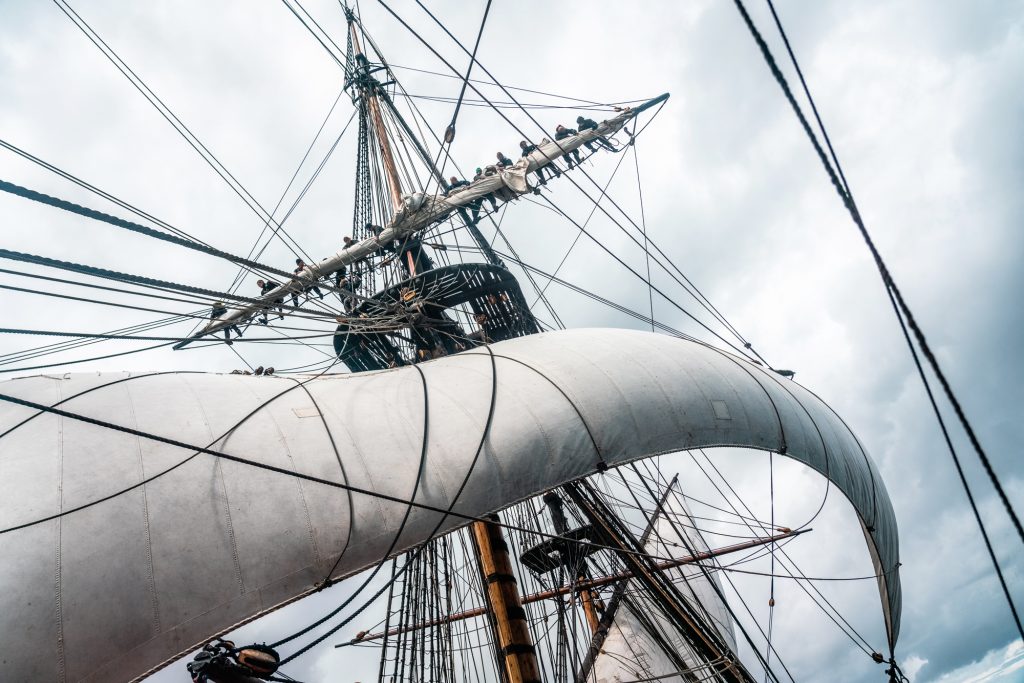
Ten days earlier, I walk up pier number four to the magnificent ship Götheborg where she lies at her home port, by the Swedish East India Company in the Eriksberg area of Gothenburg. It’s a warm and sunny pre summer day and the sharp smell of tar and saltwater tease my nose. I go through the locked gates and pass the ship. There she is. Just as beautiful as I remember her. Without sails at the moment, but still, pure beauty.
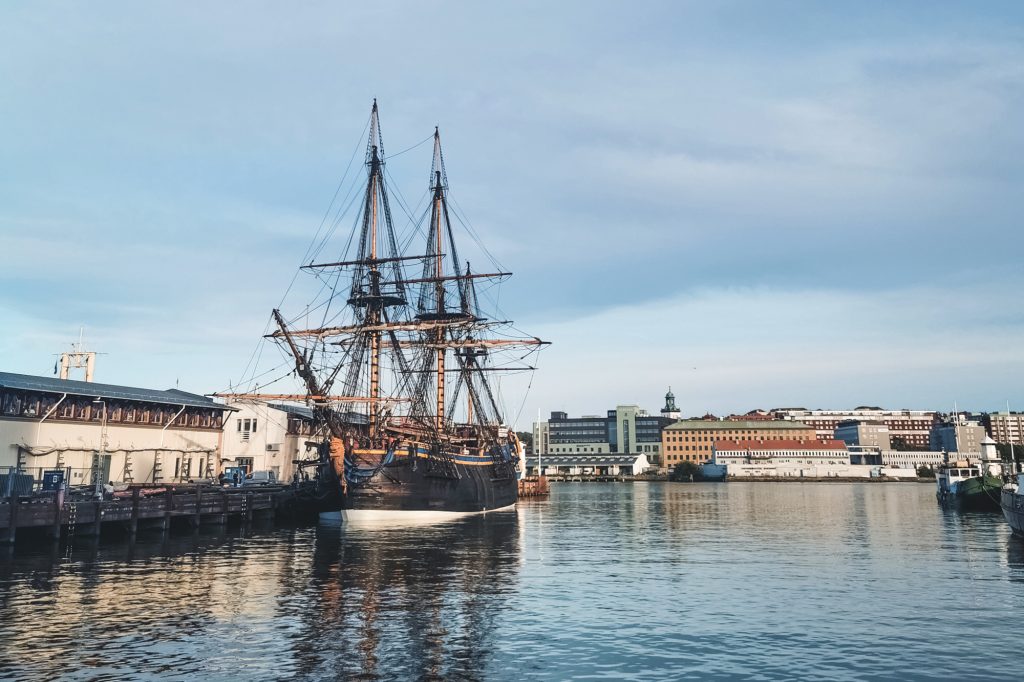
The ship is a replica of the Swedish ship Götheborg which sailed between Gothenburg and China between the years of 1738 and 1745. On her way home from her third trip, she sank in a place almost visible from here – the Hunnebådan ground. Everyone on board survived, but it’s still unclear exactly what happened. This as all the documents were destroyed, either by the event itself or by hand later on. It’s said that the goods aboard could be worth more than the entire Swedish state budget, and that the company wanted to keep the numbers to themselves. Still today, the sinking remains a mystery.
Parts of the cargo were salvaged, but the remains of the ship were left at the bottom of the ocean. In the 1980’s divers started to examine the wreck, then surrounded by tons of porcelain shards and covered under thick layer of tea leaves. Excavations of the wreck site started and a dream about making a replica emerged. The foundation “Ostindiefararen Götheborg” and the “Svenska Ostindiska Companiet AB” (SOIC) was formed and in the mid 90’s the work of building the replica started. She was launched in 2003 and two years later, the over 1200 ton piece of wood and iron, made her maiden voyage to Stockholm. Thereafter she started her journey to China, the same route as the original had taken. This as the largest ocean-classed wooden sailing ship in the world.
After the homecoming in 2007, the ship sailed in the Nordic countries and Northern Europe. But for the last 7 years, she has been bound here due to financial issues and discussions about the purpose of the ship (if it should rather stay as a landmark in Gothenburg). In 2017 it was even stated that she would never set sails again. But in 2021 Greencarrier AB, a logistic and transportation company with focus on sustainable shipping, bought all the stocks in SOIC AB and the work towards hoisting the sails again, started. In 2021 she made a trial journey to Stockholm and now it’s time for what everyone involved with the ship has been waiting for – a second trip to Asia.
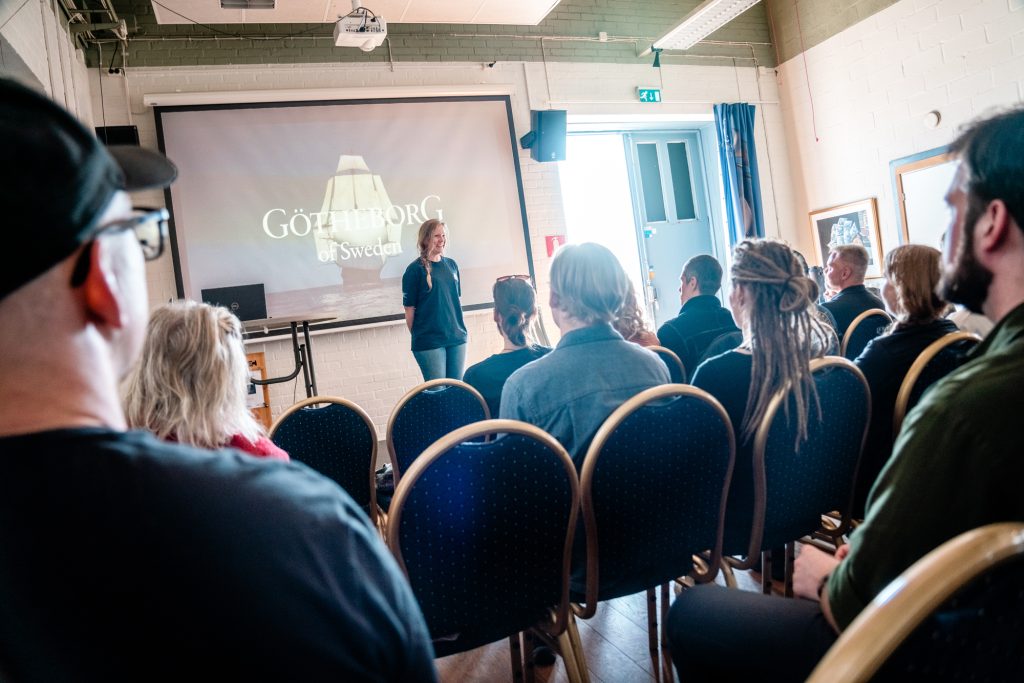
DAY 1
You can almost feel the excitement sparkle inside the SOIC headquarter where we gather to sign in for the first leg on the big journey towards Asia. All eyes twinkle and there are big smiles across everyone’s faces. As Gabriella ”Bell” Johansson, recruiter at Götheborg of Sweden, welcomes us from the stage, her voice shivers with happiness as she expresses how much she has been waiting for this very moment. I can feel a tear take shape in the corner of my eye. The first time I ever heard of the ship was even before she was launched. I was a fanatic of Maritime history and read everything I could get my hands on (this was before the era of smartphones). I was of course stunned by the work, but could never imagine myself getting the opportunity to sail with it. Then I was a newly graduated kid with neither job nor money. Over the years, other interests and adventures have crossed my path, but in a corner of my heart the dream of sailing with a ship like this has lingered, waiting for the opportune moment. And here it is. I feel the tear leaving my eye and roll down my cheek. It’s a dream for me too that is about to become real. A more than 20 year old dream.
The three watches are given a different coloured scarfs. Portside is red, Midships is yellow and Starboard is green.
We also get two crew t-shirts, pants, shirt, a harness and rain gear to work in.
The first day on board is all about familiarization, both with the ship itself and the crew. As we signed in, we were divided into three watches: Starboard, Portside and Midship, all with different coloured scarfs. We will take turns working four-hour shifts, or watches as it’s called. Then we’ll have eight hours off as the other watches work, then four hours of work again and so on. I’ve gotten a green scarf, meaning I’m part of the Starboard watch, who works from twelve to four, day and night.
In the crew’s forward living quarters (förskans) on the starboard side, is where we will have our own private space. Some get a bunkbed and some get a hammock and we all get a 20x30x70 cm box for our personal belongings. The room is small, way smaller than my tiny one-room apartment in Stockholm, but it will fit all of the 13 members of my watch. Looking after us, we have two watch leaders. Sigrid Ringarp or “Sigge”, a 38 year old woman from Varberg who’s been working on the ship for years and her assistant Anthony Pavie – a 30 year old Frenchman who spent the last 8 years on different ships, not least the similar French ship L’Hermione.
Sigge has short curly blonde hair and the sparkling feeling from the building in port, reflects in her eyes as she welcomes us under deck. We get our ship number and start to introduce ourselves to one another. At this point we hardly know anything about each other, but in a matter of days, we will all be like a family.
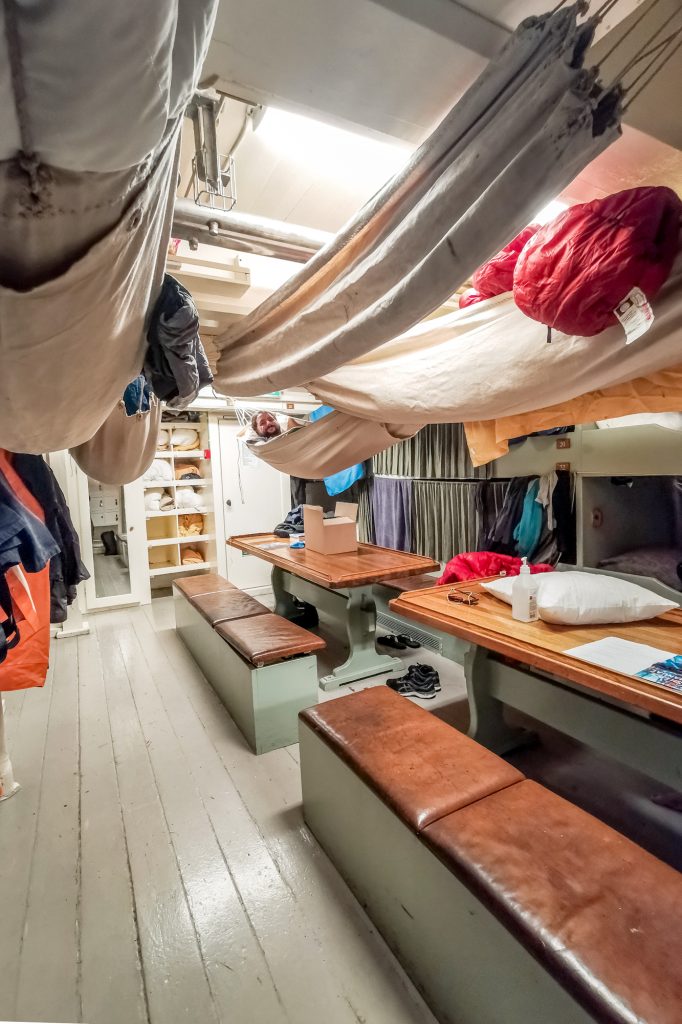
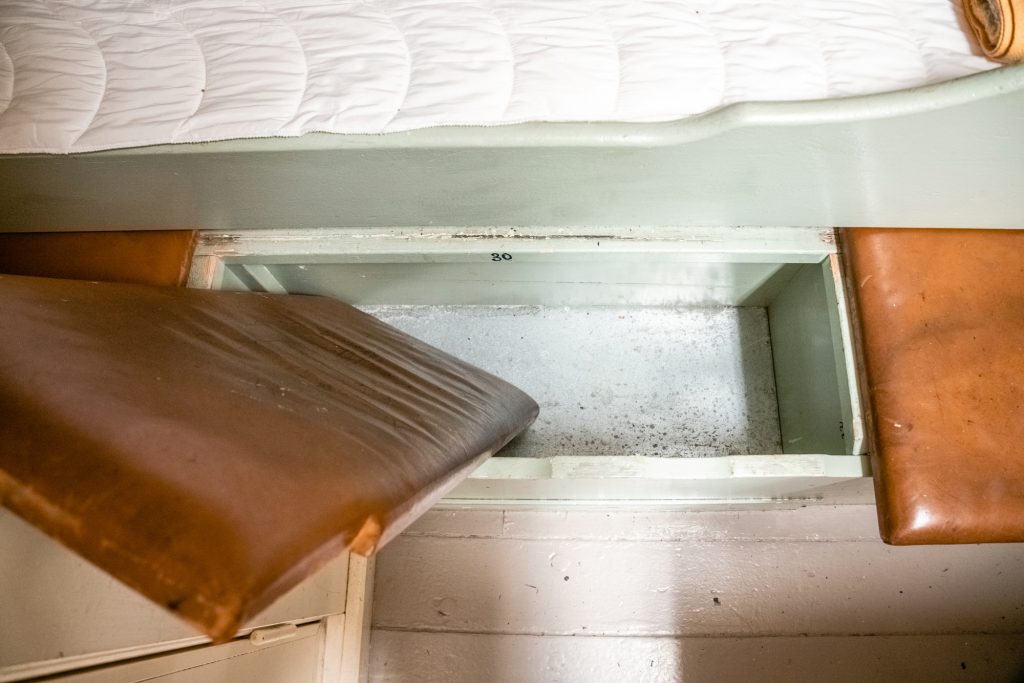
With us is also Marielle ”Marre” Cocozza, second officer aboard and chief officer of Starboard watch. She’s young, not even in her 30’s but has an aura of dignity and integrity, still with a twinkle in her eyes. With a voice both calm, mischievous and authoritarian, she tells us about safety aboard. The ship might be a replica of an ancient ship, made by traditional hand craft techniques, but in order to sail she must be equipped with modern safety equipment, such as; watertight bulkheads, lifeboats, a communication desk, digital navigation, an engine room and a fire-fighting system.
After the introduction, she takes us on a tour around the entire ship, the same one as we’re gonna do when we take turns doing fire rounds. We go from the tiniest areas in the bottom of the fore and aft, the forepeak (förpik) to after-peak (akterpik or arkli), passing the gundeck, machine room, the living quarters etc. We also check the emergency exits and the fire extinguishers. Marre points out that we should lay a hand on them every time we pass, so that our muscle memory will help us remember where they are if needed.
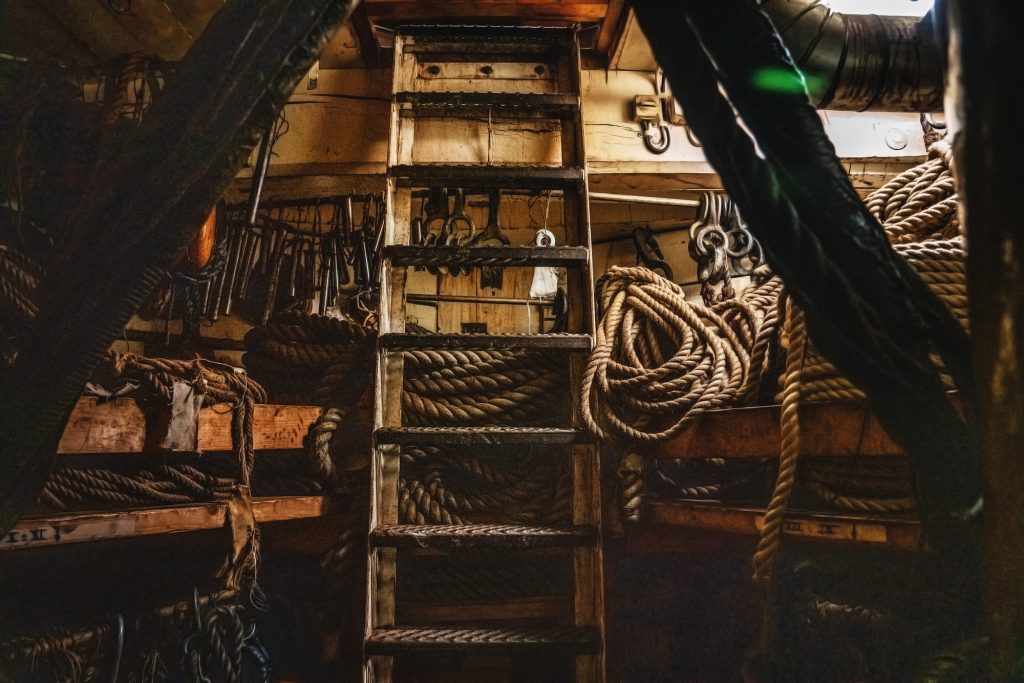
Going through the entire ship once an hour is part of the safety routines. It’s a good way to get to know the ship as you’re passing through every single corner of it – such as the lower forepeak (above) and machine room (below).
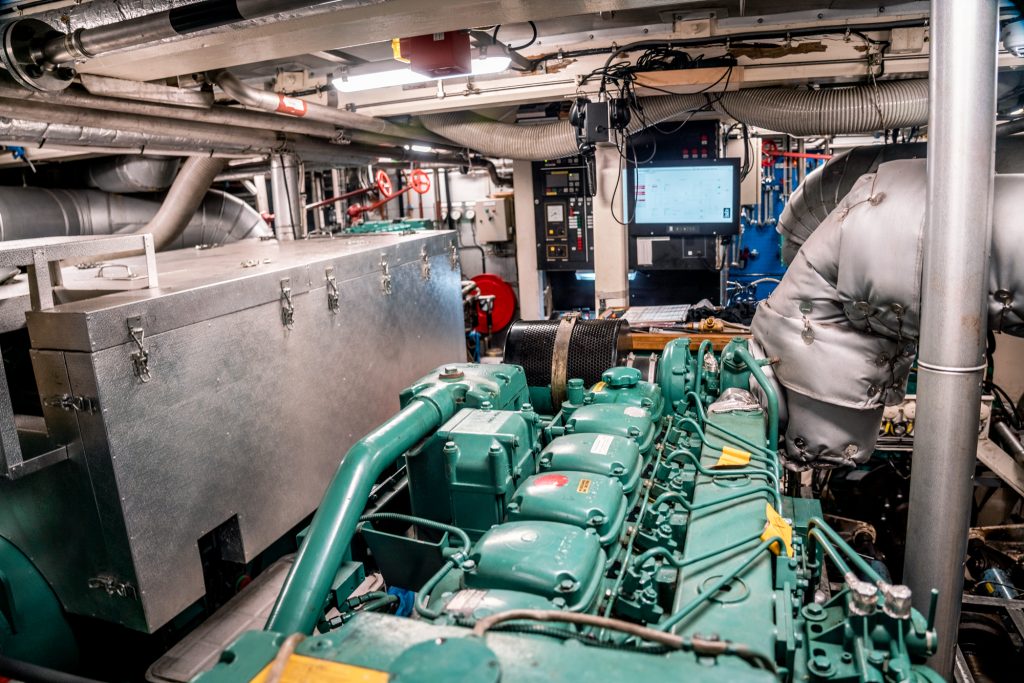
THE RIG
Last but not least, it’s time to climb the rig. The ship is a so called full-rigged ship (fullriggare) – a sailing vessel with three or more masts, each divided in three segments: lower mast (mast), top mast (märs), and topgallant mast (bram), each rigged with yards (rån) and squared sails (råsegel).
I, who have climbed mountains and smaller rigs before, am not that worried. Even though I have a strong fear of falling, we all have a harness with two slings with carabiners, to secure us as we climb. That usually reduce my fear, but this turns out to be different. Our mission is to climb up to the platform in the mainmast (stormast) by the ropes that holds it into place, called shroud (vant). My heart is pounding, both of excitement and nervousity as I step on the rail and click on my first carabiner to the safety line.
Everything goes great, until we come to the last part. About 3-4 meters below the platform, the shroud goes out, which means you have to climb with an overhang. This part is called futtock shroud (puttingvant). Even if there is safety line, it will only save you from falling off the ship. If you fall, you will fall straight into the ropes under you. I give it a try and hear Sigge’s cheering voice from above the platform; “Trust your hands, don’t think too much. Take a deep breath and just go for it!”. I take one step – and freeze. I can’t do it! I give it another try, but the same thing happens. It’s so frustrating! I really want to, but I just can’t! Instead I get to climb up the inside so that I can get out on the yard (rå), the horisontal piece of wood that the sails are attached to. This goes better, even if it’s a bit scary as well.
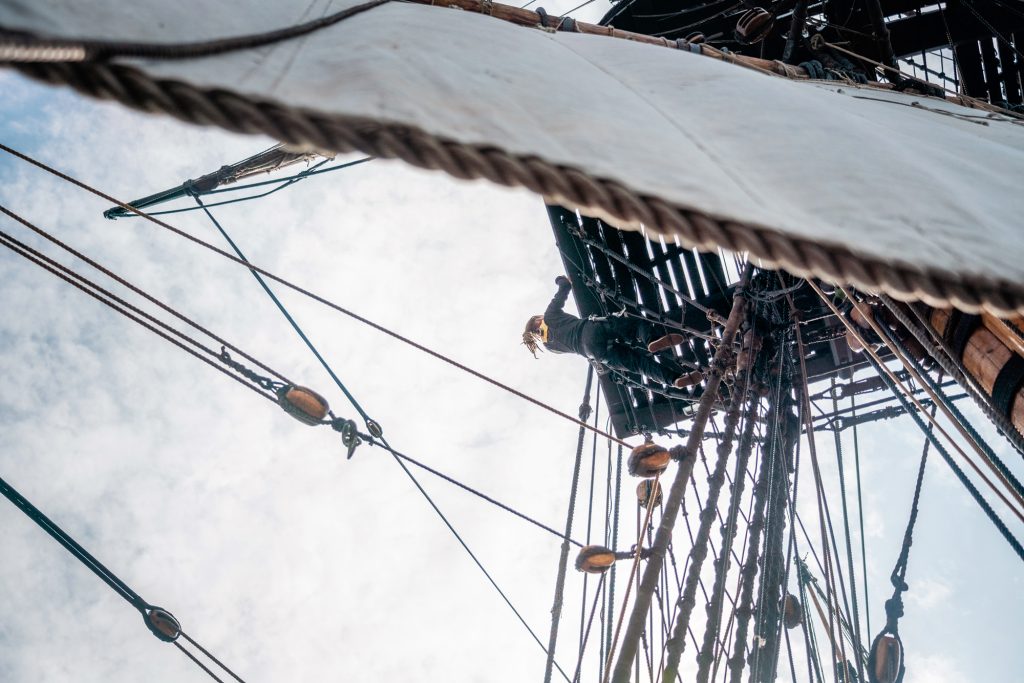
At a coffee break earlier, I was sitting with a guy named Johan who is part of the professional crew on board. I’m not quite sure exactly what his role is, he’s like part of the ship. It’s like he’s dancing wherever he moves on the ship, regardless if it’s along deck, down the steep stairs below, or up in the rig. At the break, he was telling that even he found the rig to be a bit scary in the beginning and that the best thing to do is to take it easy. ”Don’t push it more than it feels comfortable. If it’s just standing on the rail, you start with that. Then you will feel when it’s time take it to the next level. Take it one step at the time. Before you know it, you will climb to the top with no worries”.
So as we get down and the others go to change from their working clothes, I keep staring at the mizzenmast (mesanmast), the third tallest one in the aft of the ship. That futtock shroud is way shorter, maybe just 2 meters. It both attracts me and terrifies me, but I take a deep breath and ask Sigge to join me up that mast. We climb up the shroud and after some tests I get up – and down. Even though I can feel my hands and legs shaking uncontrollably as I step down on deck again, I did it! With Johan’s words in the back of my head, I promise myself to take the climbing at my pace and that my goal is to make it up the mainmast before I sign off.
Happy to have made it up to the mizzenmast platform.
DEPARTURE
The following days are all about making the ship ready for departure. As she has been laid up in port for a long time, all sails have been taken down and now we need to set them back up again. Even some of the yards need to be put into place. It’s hard work and all ”learn as to go”.
After five days, it’s finally time for departure. Along the docks in port people have gathered to wave farewell to the ship that has been part of the city for years by now. ”I really hope she will make it back. This place won’t be the same without her”, someone says.
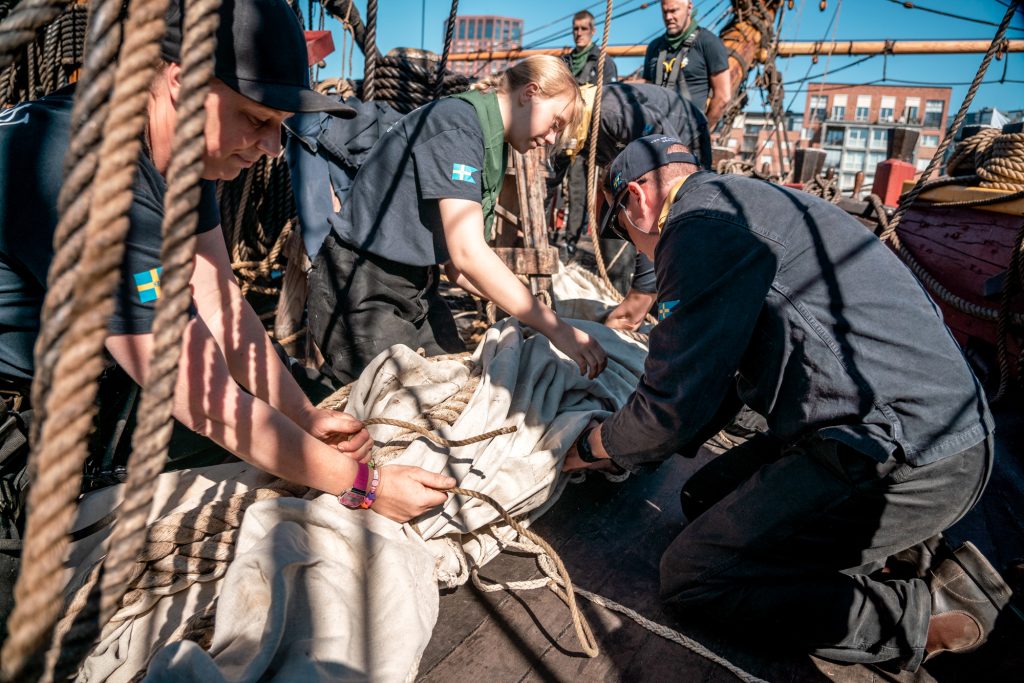
The reef knot is used to tie the sail around the yard. This is where the name comes from as reef is the term for “taking up that sails”
In Swedish, a yard is called rå – and the word for the knot you tie with the bands is simply called rå-bands-knop.
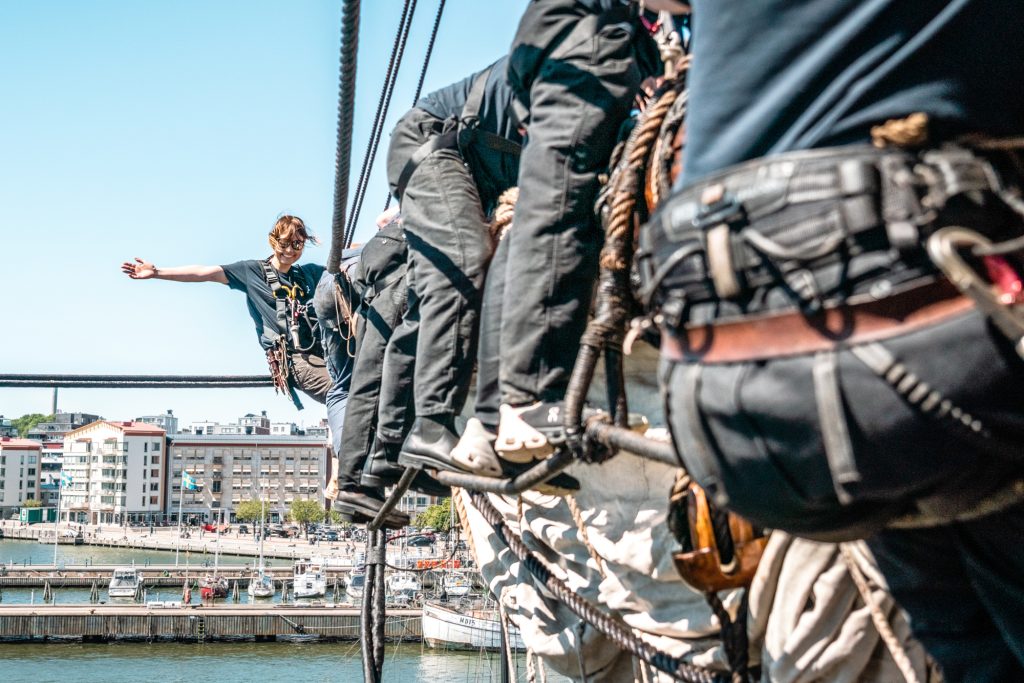
The tension is incredible, but when we finally feel her move it’s like Christmas. All hands get to the rails. It doesn’t matter if you know anyone ashore, we all wave and people wave back. We sing some shanties and after the ship has been put into place in the right direction in Göta älv, the show reaches its climax as the guns shoot salute to the cheering audience.
The rain that has fallen during the entire departure ceremony finally stops as the ship reaches Älvsborgs fästning. Dark clouds hang over the city, but the horizon is bright and a couple of sunrays find their way through the clouds and shine up the deck. The adventure can begin!
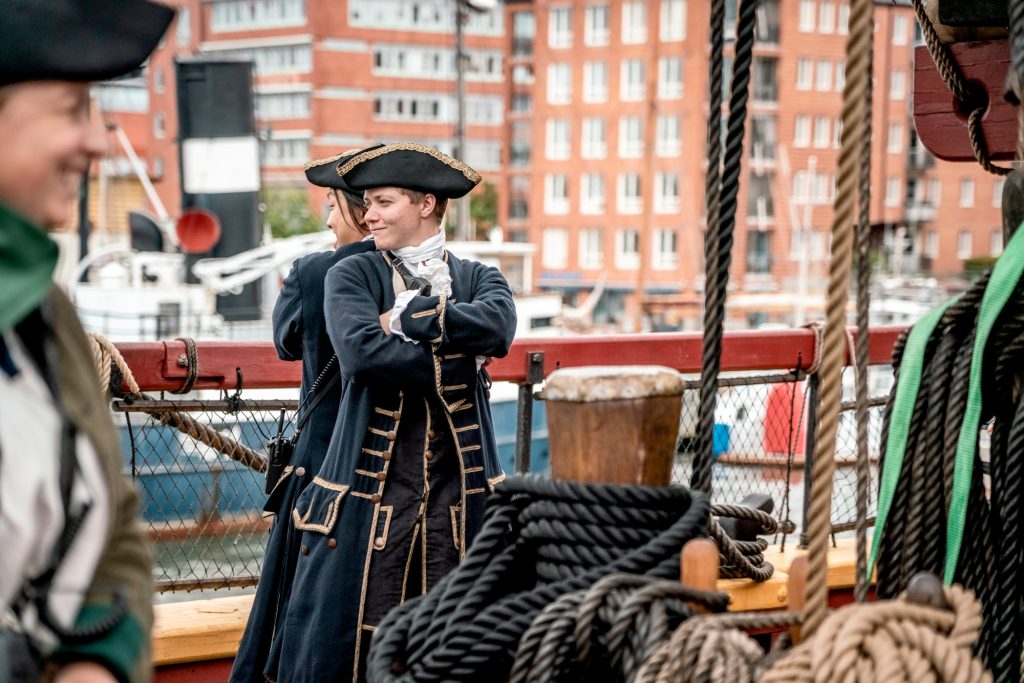
The professional crew on board gets to dress in historical clothes as it’s time to face the crowd
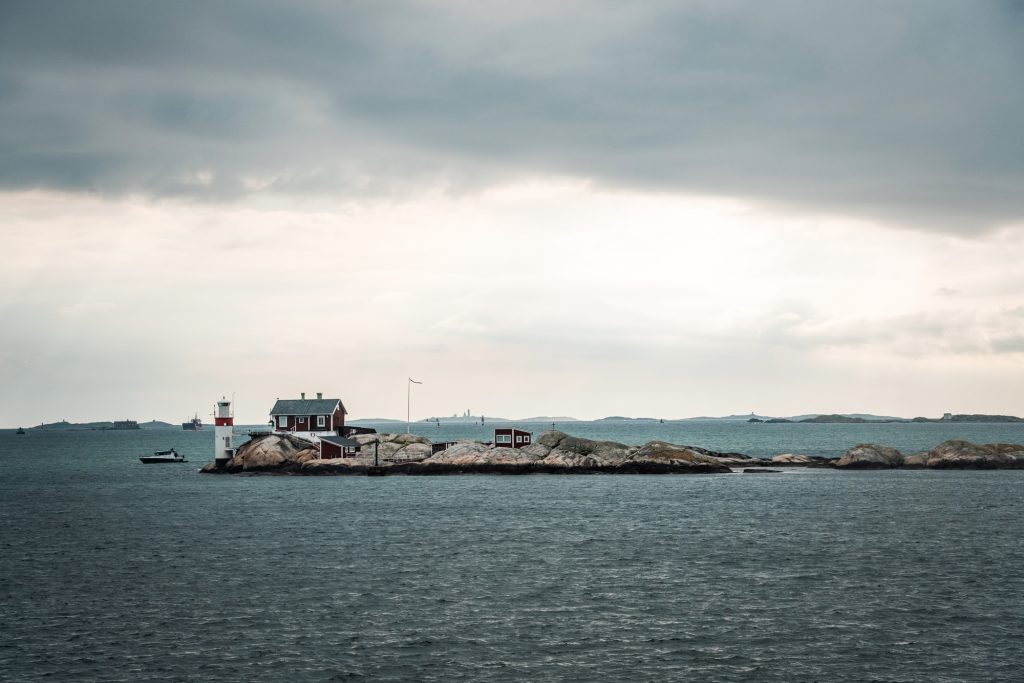
LIFE AT SEA
Setting off to sea is like entering a different world. There is no such thing as night or day, even though it’s dark every second watch we do. The normal way of facing a day dissapears, as you only get to sleep for a couple of hours each time. But below deck in our living quarters, the night is a constant possibility, no matter what time it is.
From now on, only four hours count. The ones on watch. Back in the days, an hourglass of 30 minutes was used to keep track of time. Every time it was time to turn the glass, the ship bell was stricken – one bell for each half hour that has passed since the watch started. In Swedish this is called slå glas and we keep doing so as well. When the bell has sounded eight times, the watch is over and the next watch starts all over.
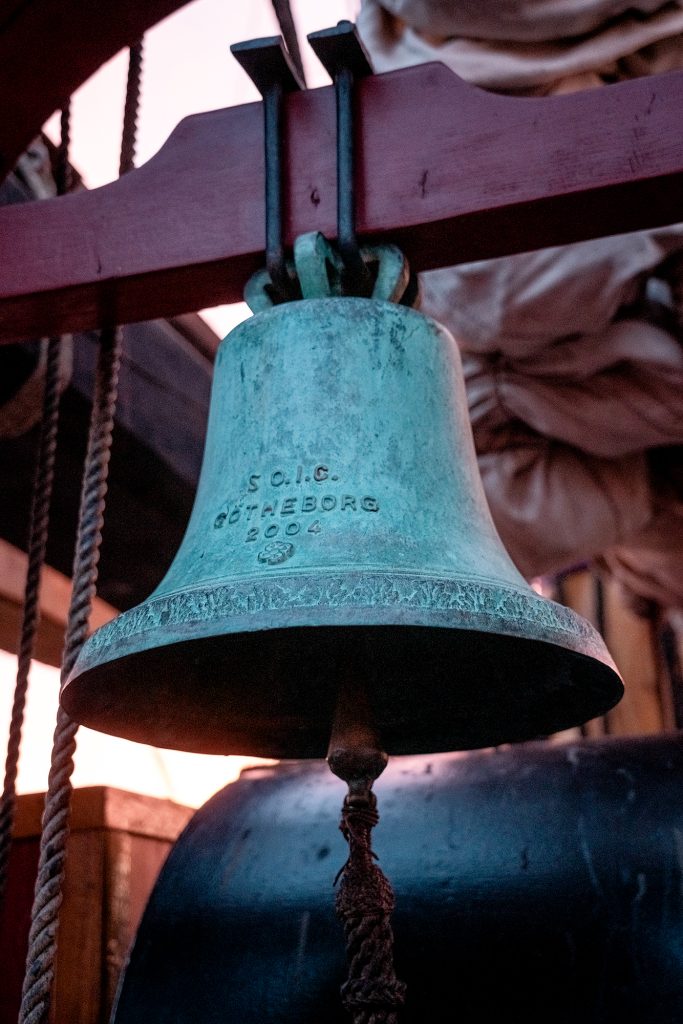
During our watch, two of us are working in the kitchen, the galley (byssan), supporting the staff. Another four is on a schedule called ”BURR”, meaning that they will take turns and shift once an hour between Fire round (Brandvakt), Lookout (Utkik), Rudder 2 and Rudder 1. The rest of the watch is on deck, ready for whatever that needs to be done. The work is hard, not seldom heavy and there is a lot of climbing in the rig. Even in the dark in the middle of the night, when no lights whatsoever are allowed on deck. It’s hard to see what to do, but the work has to be done.
On watch, Marre has the main responsibility. It is she who decides what bearing (course) to take and the one who is ”Rudder 1” steer the wheel to match that direction. It is not easy as the rudder is big and it jerks and tears the wheel. Therefore you have another person as ”Rudder 2” to help you. On deck, Sigge follows Marre’s orders and together with Anthony she commands us what to do.
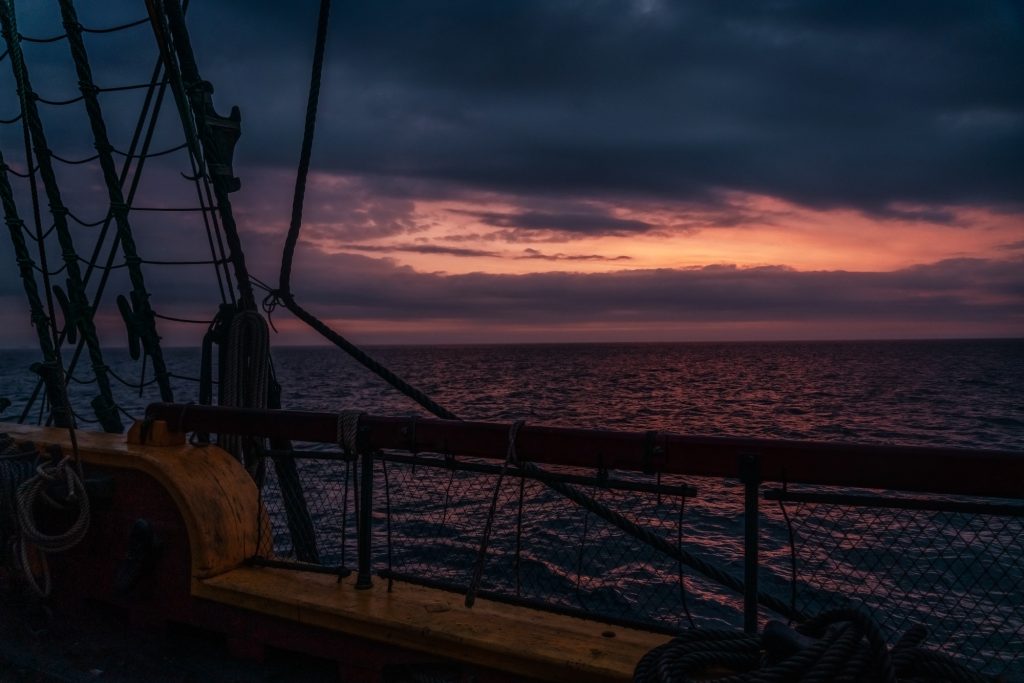
Your world is shrinking aboard. Everything that means something is on those pieces of wood that you share with almost 70 people. You become one. You, the crew and the ship. It’s almost religious. We talk about her, our mother, our god. Without her we’re nothing. It’s in her hands we have put our lives. She pulls, drags and we follow Everything you do, all actions, are for the ship. To keep it moving forward in a safe way.
The members of the watch become your family. Together with Marre, Sigge and Anthony there is Dina, Fanny, Linus, Henrik, Synnøve, Thomas, Will and four Frenchmen, Clara, Chris, Tony and Jeremy. And last but not least; Janne, a man in his late 50’s who has become my closest friend on board. None of us are comfortable in the rig and it becomes a standing joke in between us two. As during my entire life, humor becomes a lifesaver in hard times.
There are so many new words to get a hold of. Brass, kontrabrass, topplänta, hals, skot, gaj, nockgårding, bukgårding, gigtåg, bolin (all terms are used in Swedish). And as the ship can use up to 26 sails at the same time, there is a lot of ropes and their placement to keep track of as well. On top of that it’s all the different commands; hala, brassa, fira, släpp loss, slacka etc and off course the constant confusion between portside and starboard.
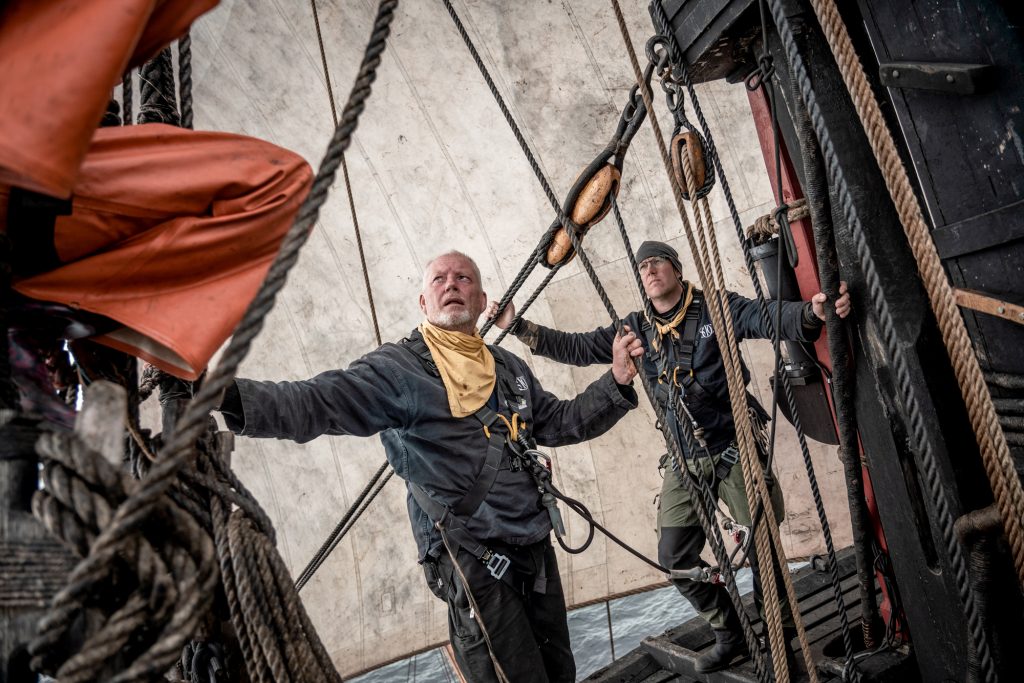
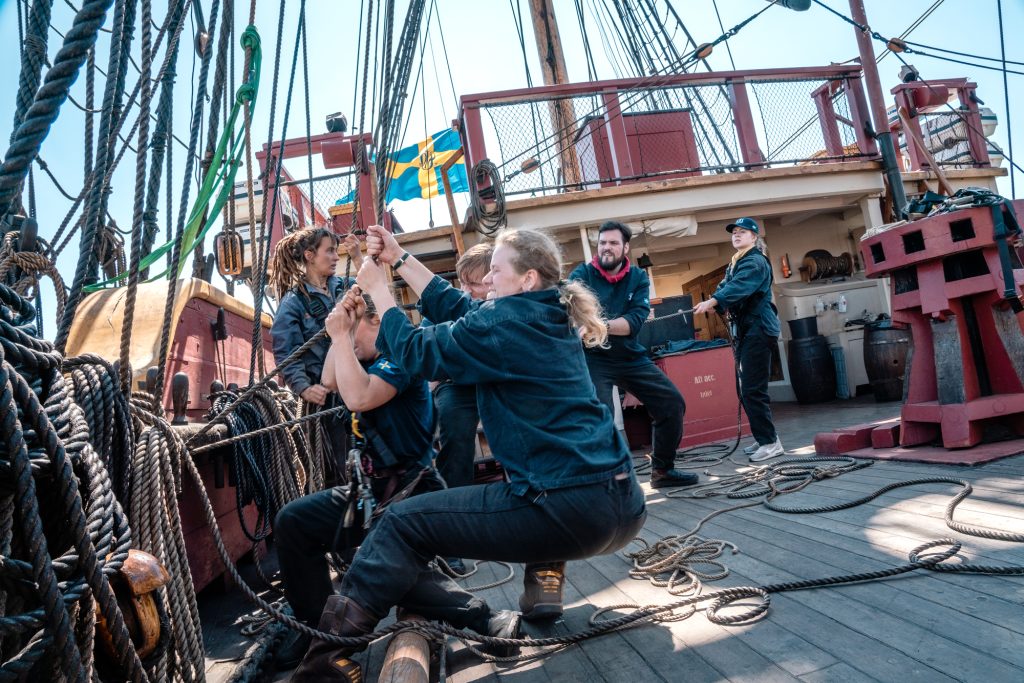
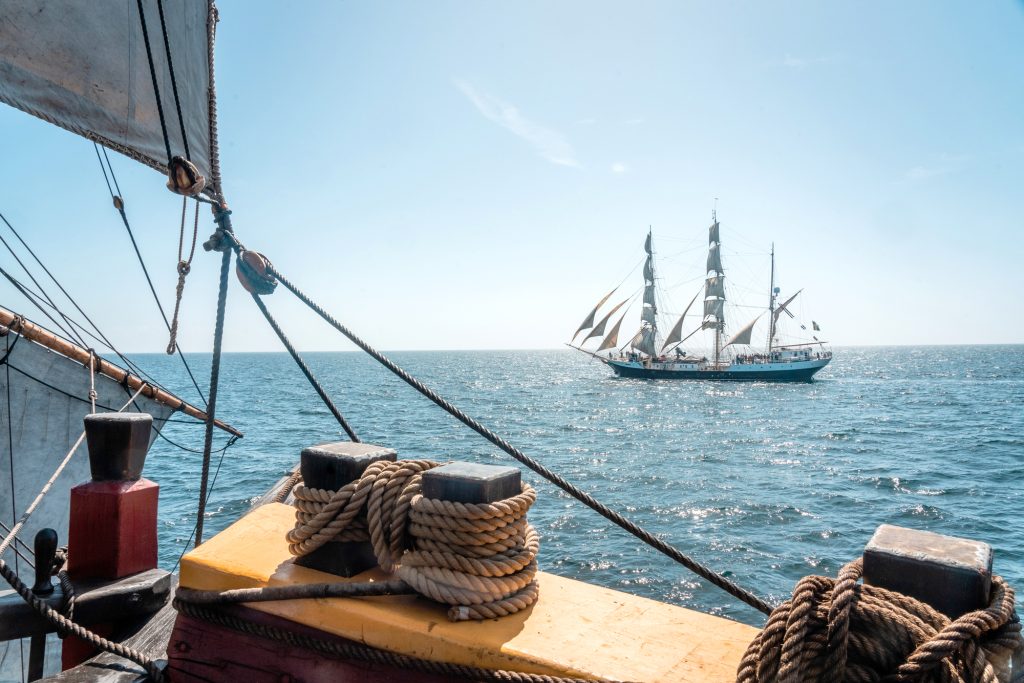
The school ship Gunilla. That was a view I hadn’t expected, to not only be on a full rigged ship, but also see one passing by!
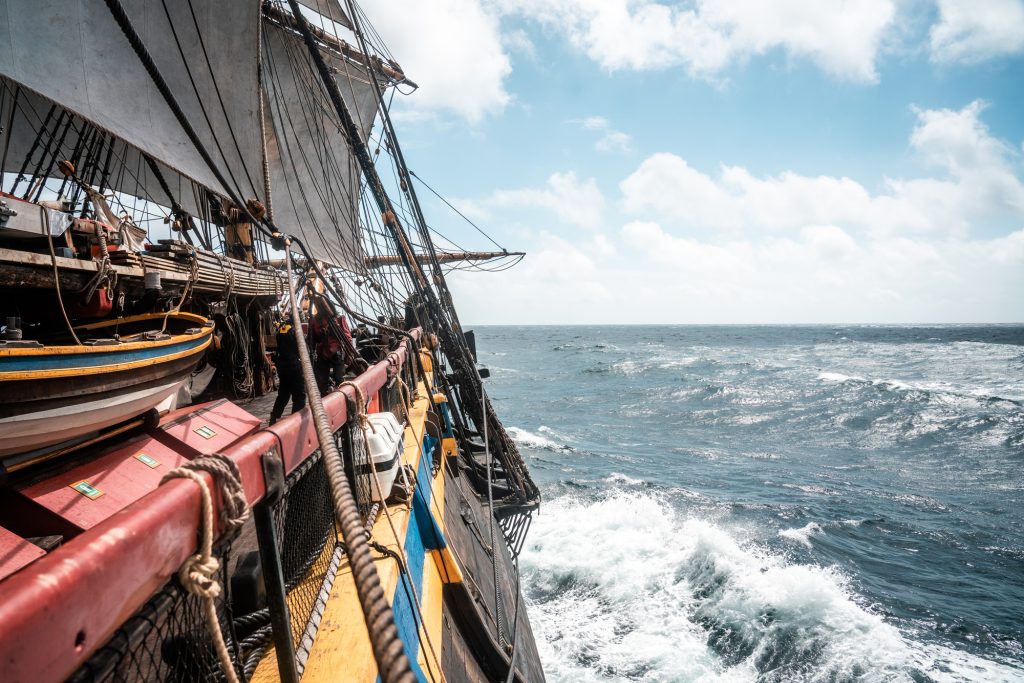
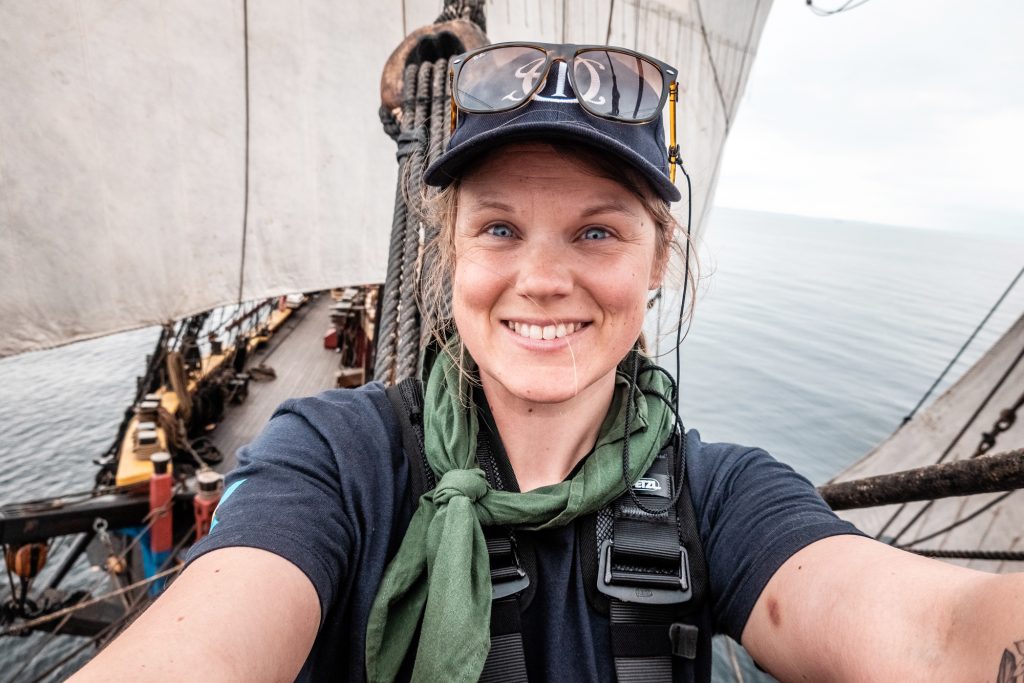
One of my favourite positions on deck are to be the lookout as you can climb up the bowsprit (bogspröt) to get a good view. As there is a lot to hold on to and steps to use, this type of climbing doesn’t bother me at all (as long as the sea ain’t too rough)
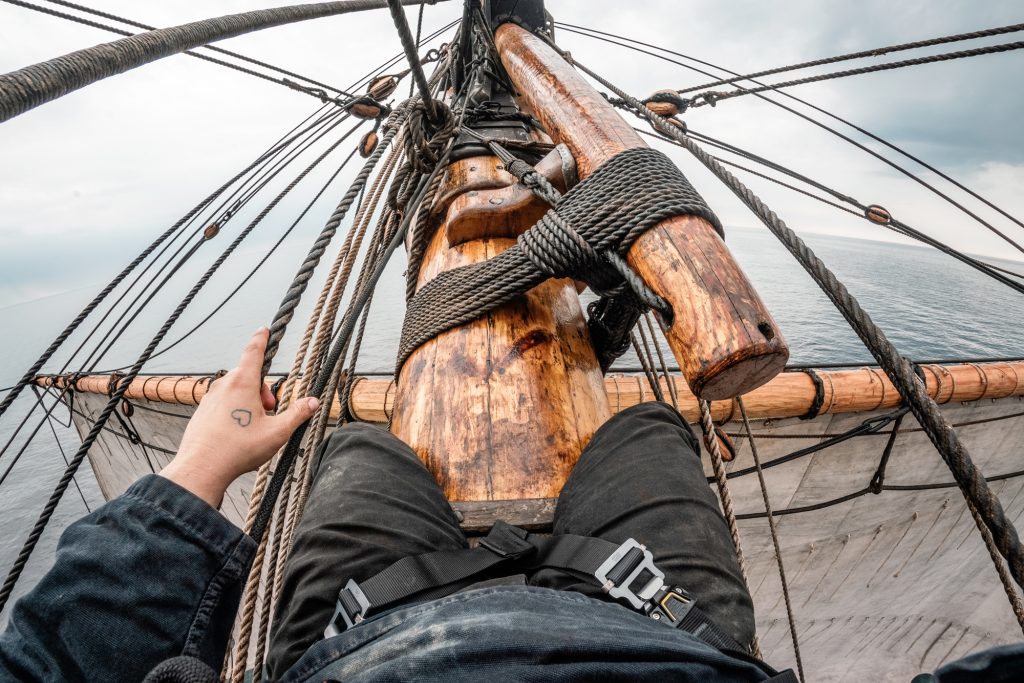
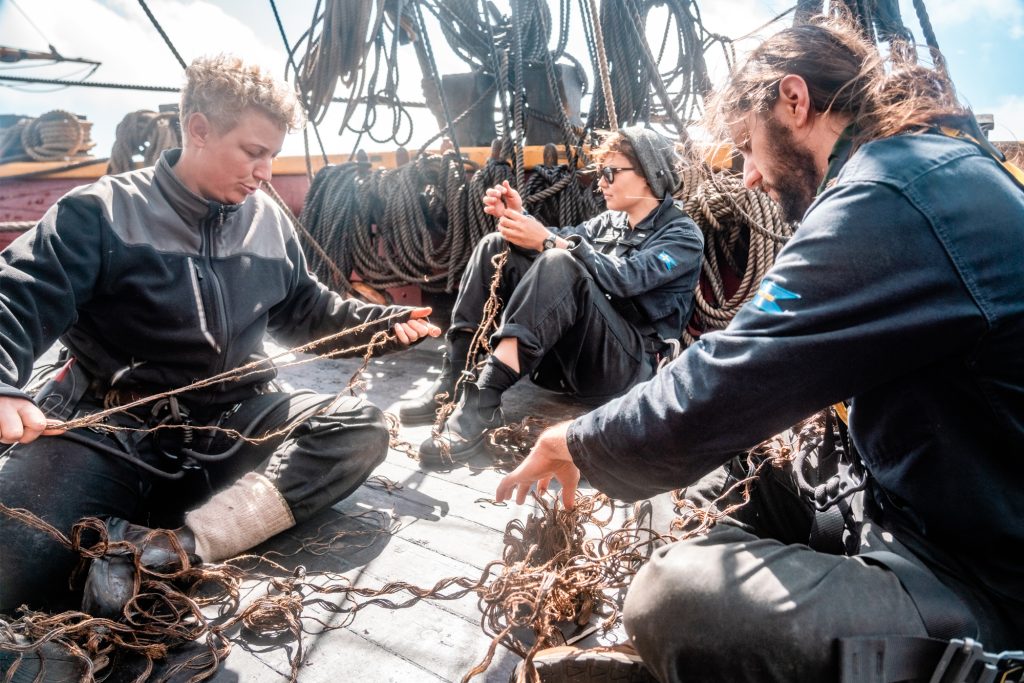
If there is no work that needs to be done, we usually practice stuff like knots, making marline (märling) or getting the rescue boat ready for a man overboard situation – or just gather around the capstan (ankarspelet) to tell stories
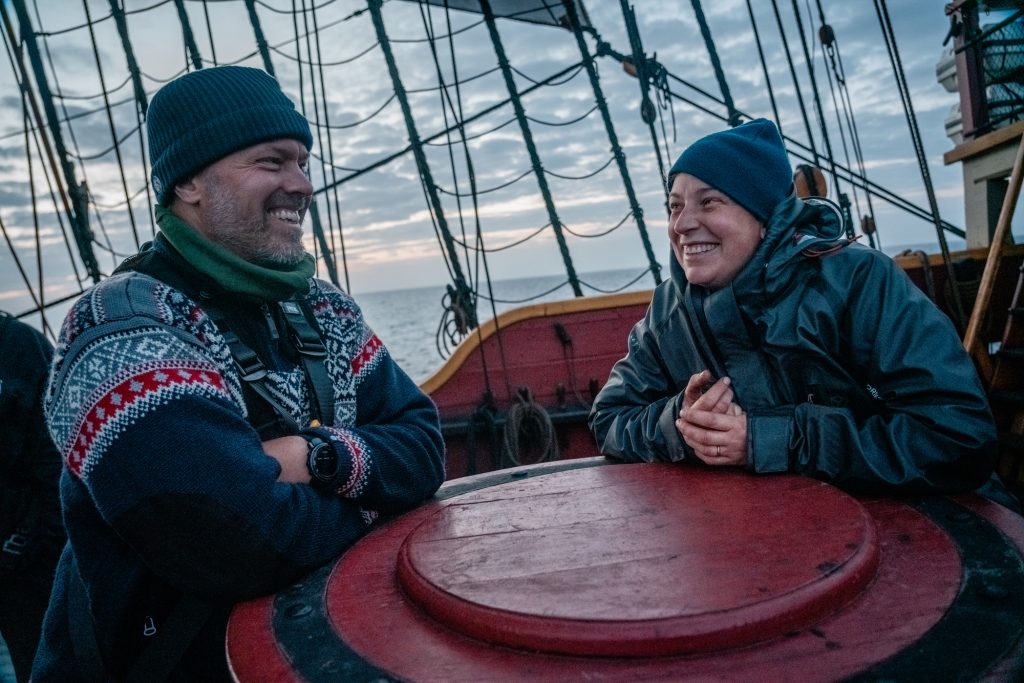
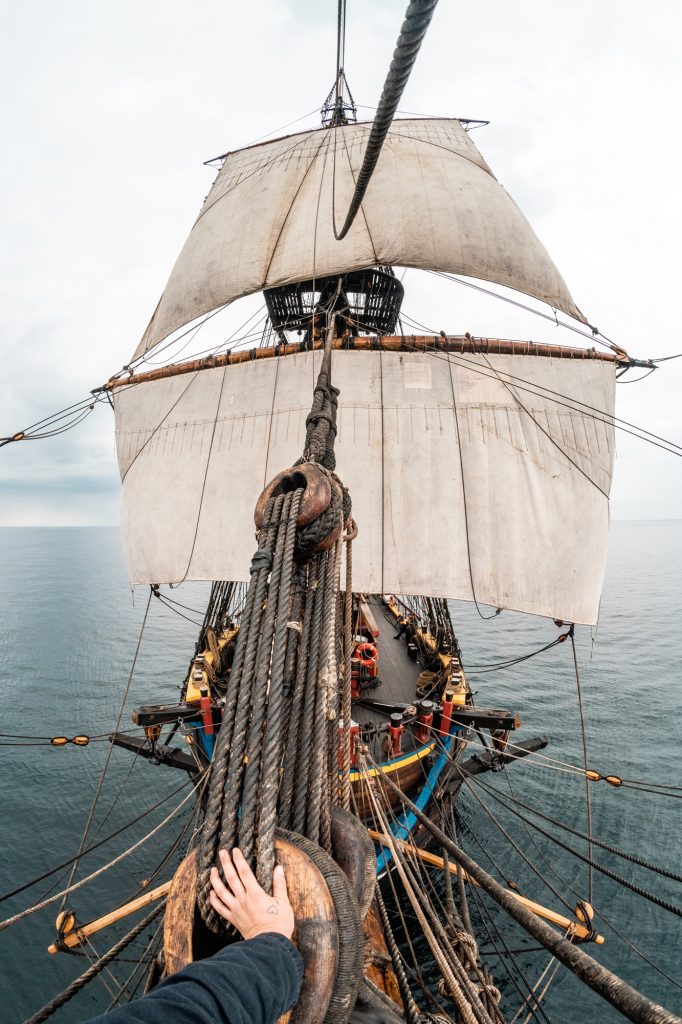
SEA SICKNESS
A few days in, as I wake up for one of our night watches, the sea has become quite rough. It’s like riding a constant rollercoaster blindfolded, as you can never predict was happens next. The world under me shifts both up and down, back and forward and side to side. It’s partly easy but then it can hastily throw you a across the ship in a sudden move. As I climb up from the living quarters to gun deck where we have our meals, I see Janne by the end of it. We look at each other and I can’t do anything but laugh at the situation. I shake my head and Janne shouts at me, ”Just go for it! Aim as far away as you can and see where you land!” I laugh even more and aim for the coffee stand, but have to grip on to a hanging guitar along the way not to fall over the tables. ”One more time!”, he shouts. As I finally reach him and sit down, I am not only struggling with this new order of the world, I also have a hard time not choking as I can’t stop laughing.
But above the deck, things are different. I’m on BURR and have to start by being lookout in the fore, with not much to keep my eyes on in the dark night. As it’s time to swap to the rudder, I have to place a bucket beside me, just in case. If you’re seasick you’re not allowed to throw up over the rail. You have to do so in the scuppers (spygatter), holes/outlets along the deck, so that you can then rinse them out with water afterwards. But if you’re by the rudder, you can’t leave your position whatsoever.
I keep standing as ”rudder 2” for two hours as I feel way to dizzy to be in charge of the steering as ”rudder 1”. But as it’s time to change for the fire round I feel better. For a bit. Walking up and down the ship, side to side turns out to be the worst possible challenge in this moment. The bucket will keep me company for the entire tour, though I never have to use it. It’s a blessing to strike the bell the eight time, telling that it’s time to hand over to the midship watch and then go down to the cradle of bunk in the skans again and be rocked to sleep.
When I wake up again, the nausea is gone and by the time we step on the next night watch 20 hours later, the sea has calmed as well.
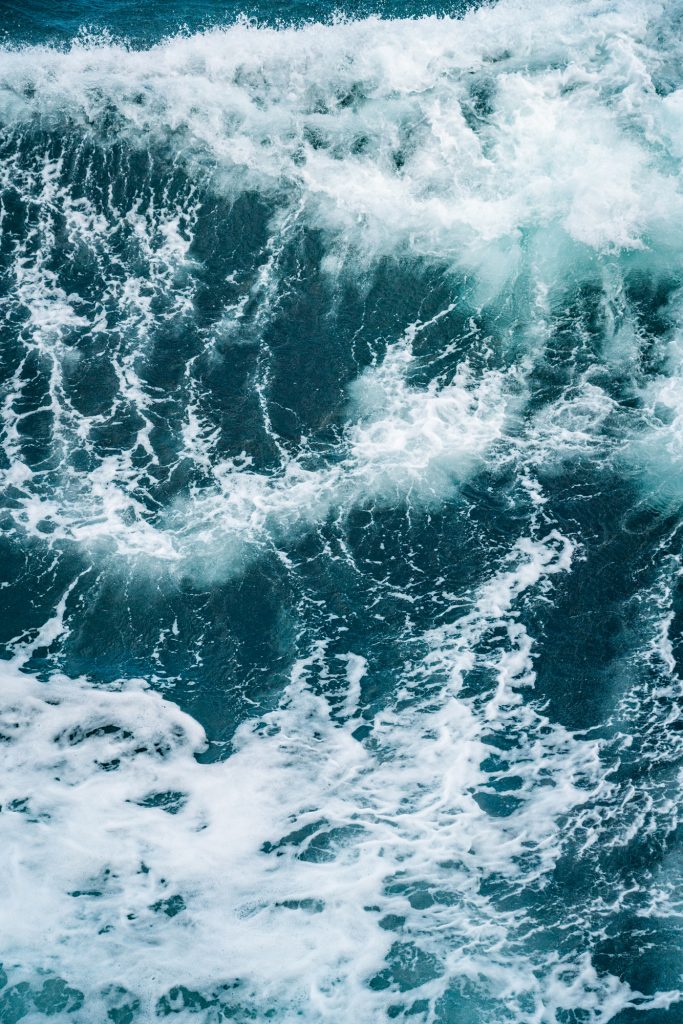
LAST NIGHT
That last night at sea, the waves getting bigger and bigger again. They come in rounds of ten and I count them to predict when the real high ones will come. The ones that make you feel weightless for a second and then drag you from one side of the bed to the other.
This is the night when I lay in bed and realise that I get what they are saying on deck above. Even the rollercoaster of a ship that I’m on seems to be under control. Like someone has taken off that blindfold. Sure, it’s still hard work during the watch. I start by ”Rudder 1” and me and Janne who is ”Rudder 2”, fight with the waves that have no intention of keeping us on the right course. But I don’t feel ill. The fireround goes way better than last time and the lookout post doesn’t affect me either, even though the sea is much rougher than last time.
Marre even orders me to keep track of the foretack davit (fockhalsdäverts), two beams by fore, as they start to touch the water in the waves. She tells me that it’s ok if it happens one time in ten waves, but if it does so two/three times or more, I have to give her a notice. If it gets that bad, they risk to break.
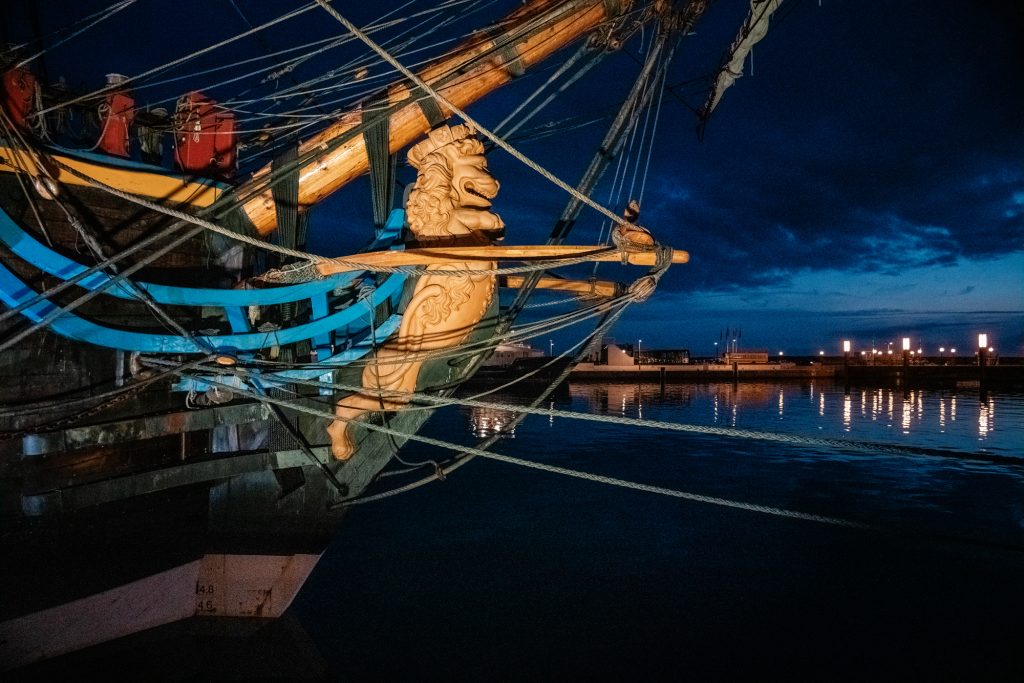
The foretack davit (fockhalsdäverts) are the beams next to the beakhead lion (galjonslejon). This is where the waves reached the last night, that risked breaking them.
ARRIVAL
The next day we enter Helsingborg with a bang – litterally as we salute with the guns just before we make port. There is a big procedure to get the gangway out, sing our shanties to the enormous crowd in port, welcoming our supercargo (superkargör), Stefan Björk – owner and chairman of the Board for Greencarrier AB – aboard and prepare the sun deck for the VIP guests and the rest of the ship for the “open ship” we will have tomorrow.
As the chaos calms down, I walk up to Sigge. It’s time. During the trip she has helped me overcome my fear and climb up to the platform on the foremast (fockmast) – the second tallest mast – but there is one platform left. “Would you be so kind and climb up to the mainmast platform with me? I’m not stepping off this ship before I’ve done it.”
We get up, and this time I can do exactly what she told me the first time, I take a deep breath and one step at the time, I get up!
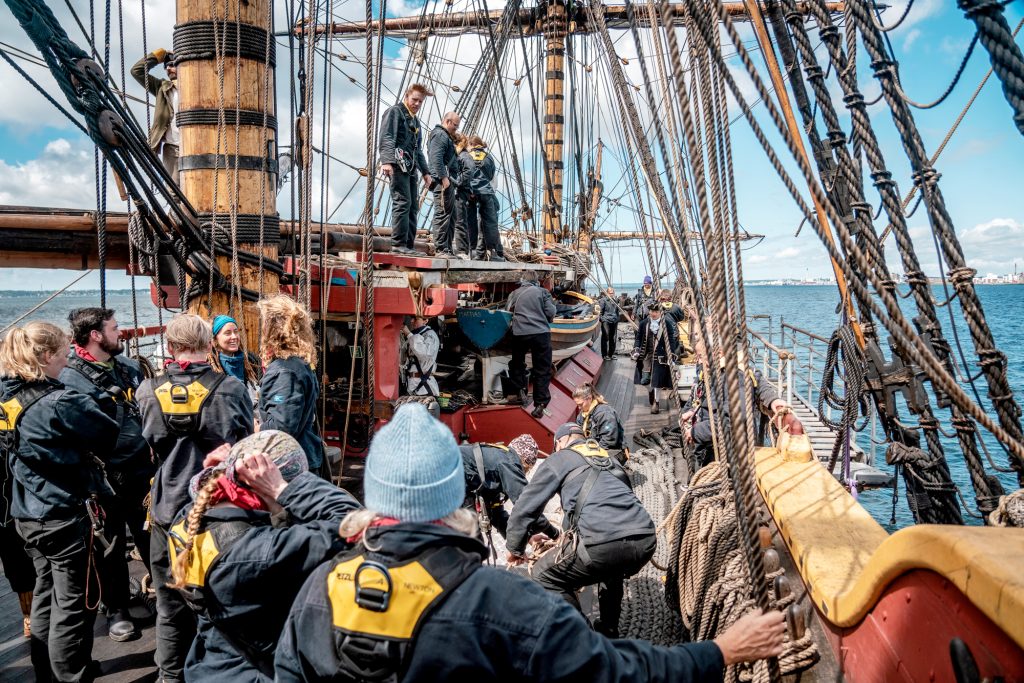
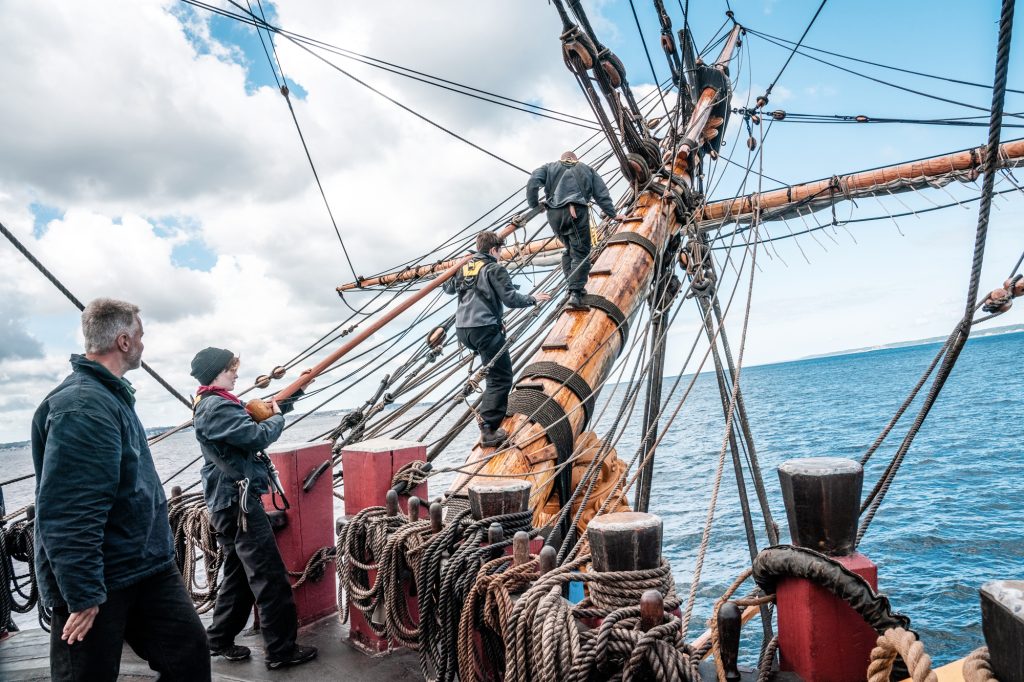
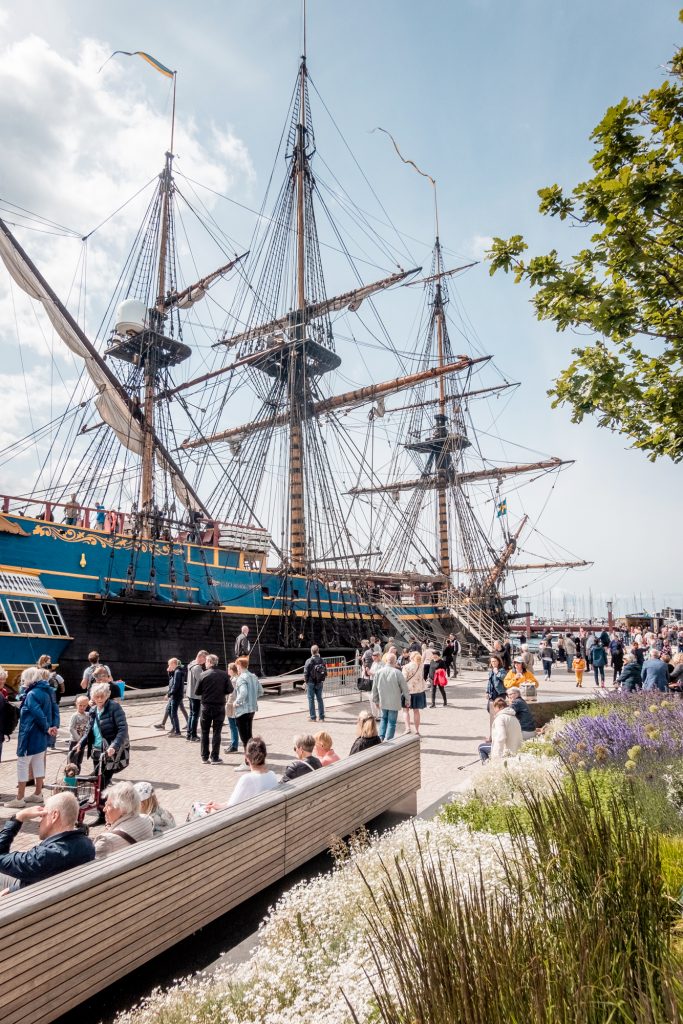
Sigrid and me – happy after finally making it up to the mainmast platform by the futtock shroud (puttingvant)!
As I step ashore I feel proud. I’ve managed to climb the futtock shroud in all the masts and overcome my fears. I have understood the sails and the basics on how to work with them. It feels a shame to sign off now as things are finally coming together. There is so much that I can develop from here and much more that I could learn now as the basics are there. Luckily, this is not the last time I will put my feet on this ship. As I get on the train back home to Stockholm, I type in gotheborg.se and sign up for the Biscayan adventure between Bremerhaven and Lisbon in August/September. See you there!
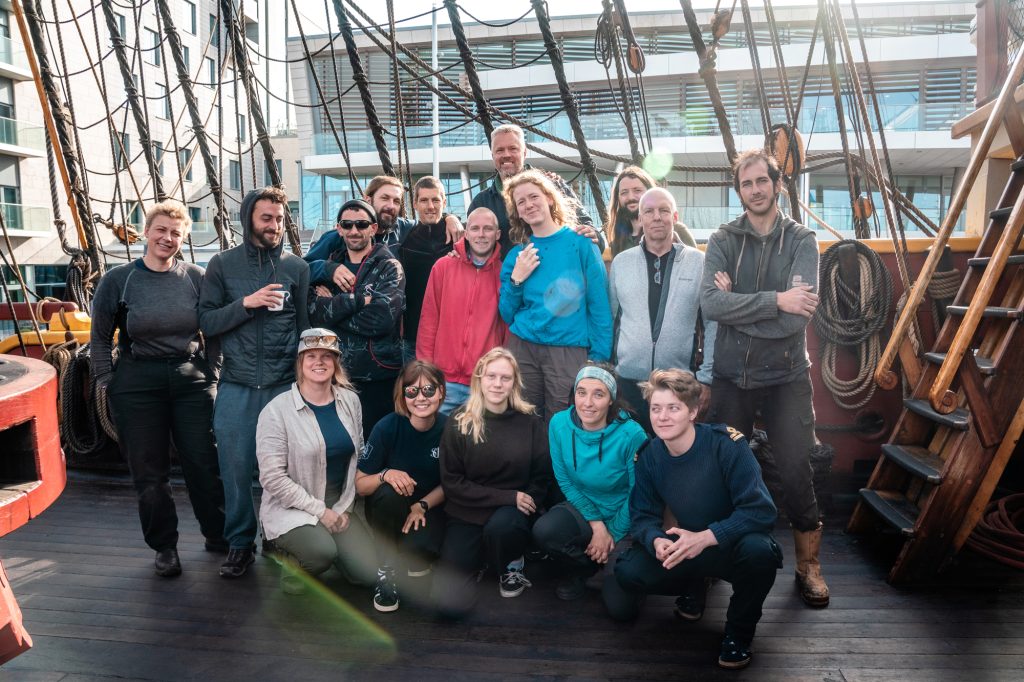
My beloved starboard watch. Thank you for everything!
Back row (from left): Thomas, Henrik, Linus & William.
2nd row: Sigrid, Jeremy, Tony, Chris, Synnøve, Janne & Anthony.
3rd row: Me, Dina, Fanny, Clara & Marre

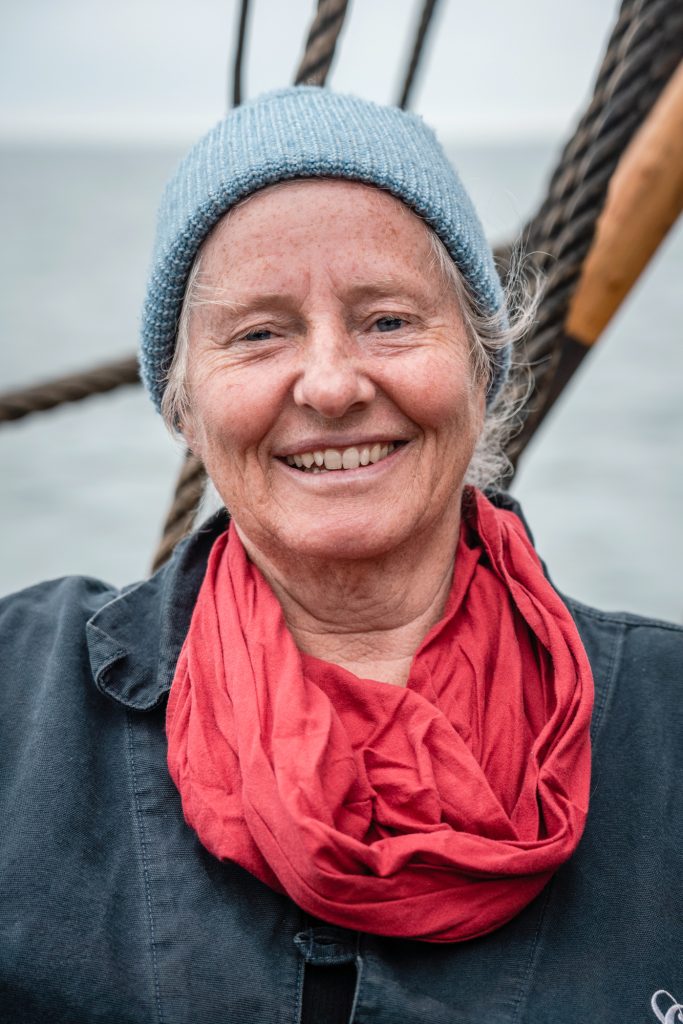
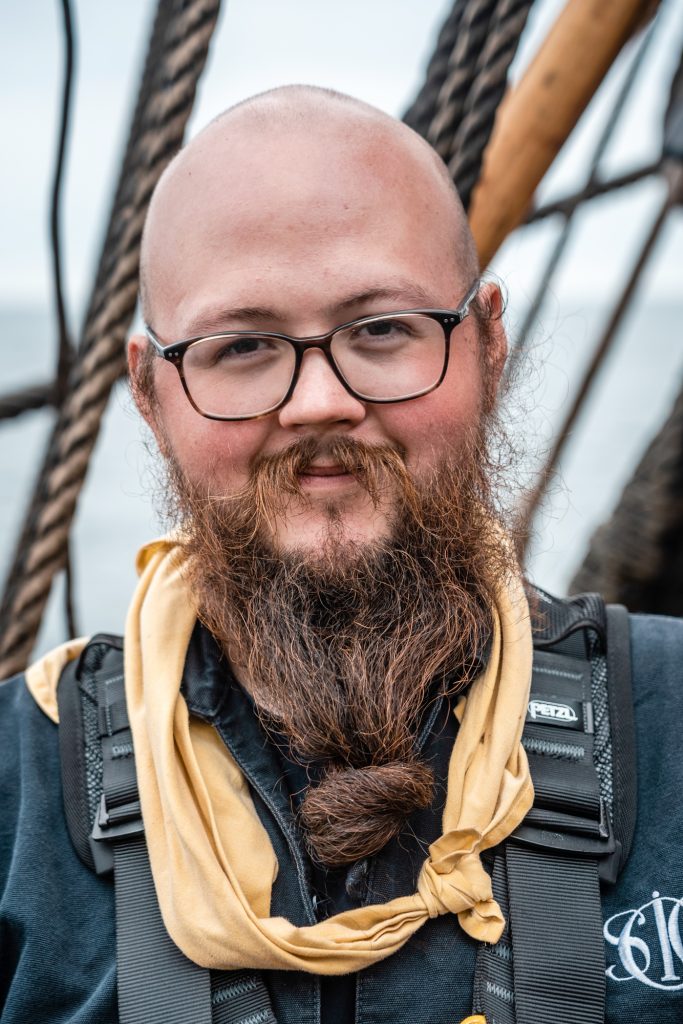
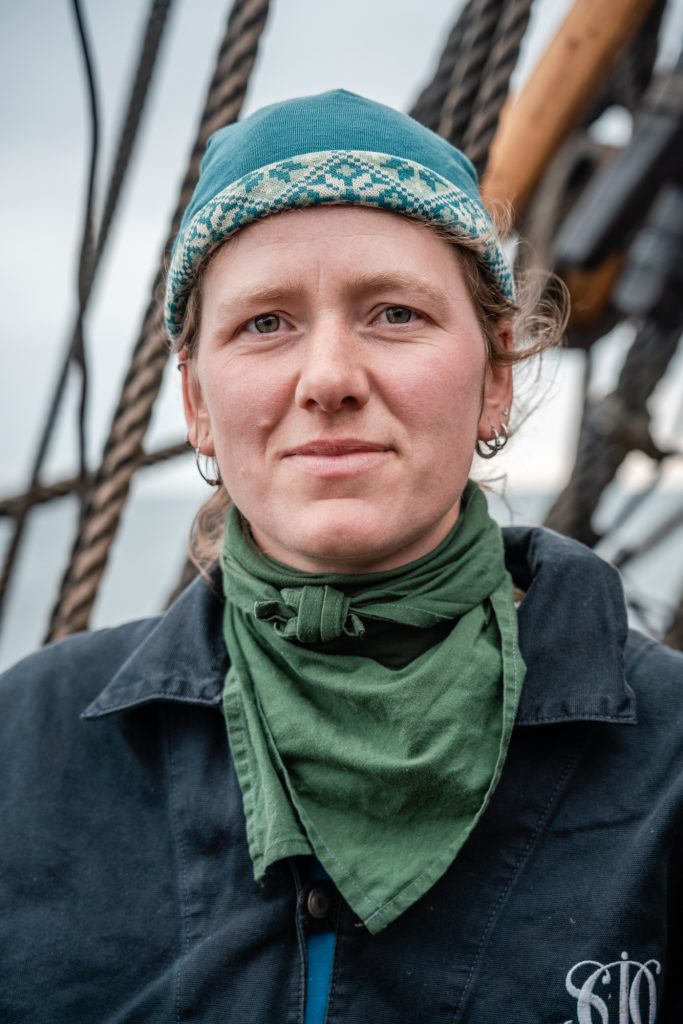
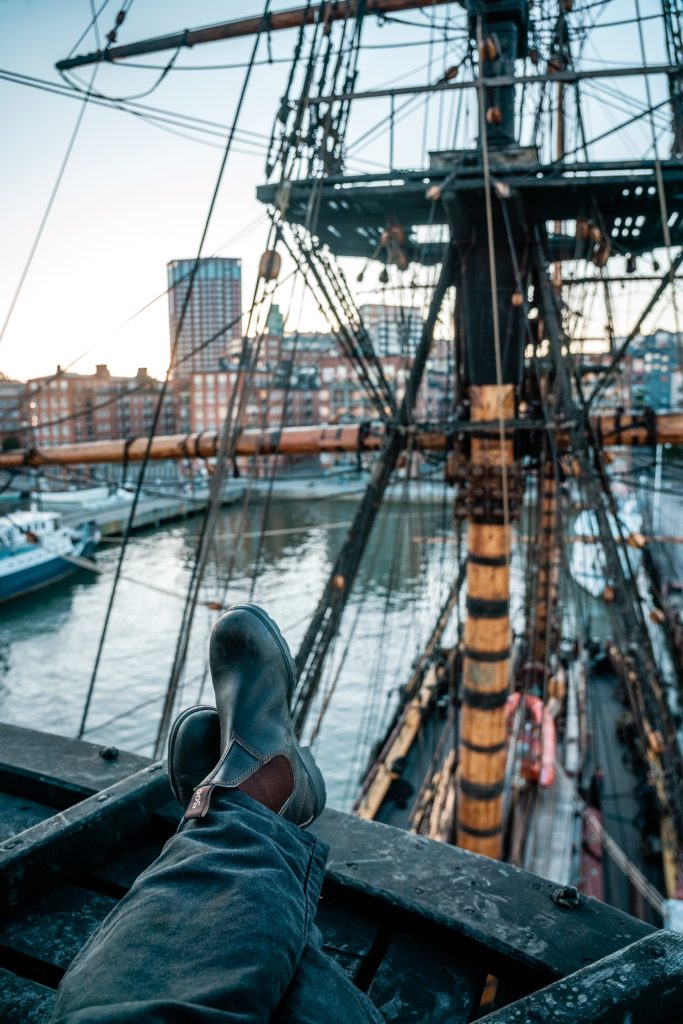
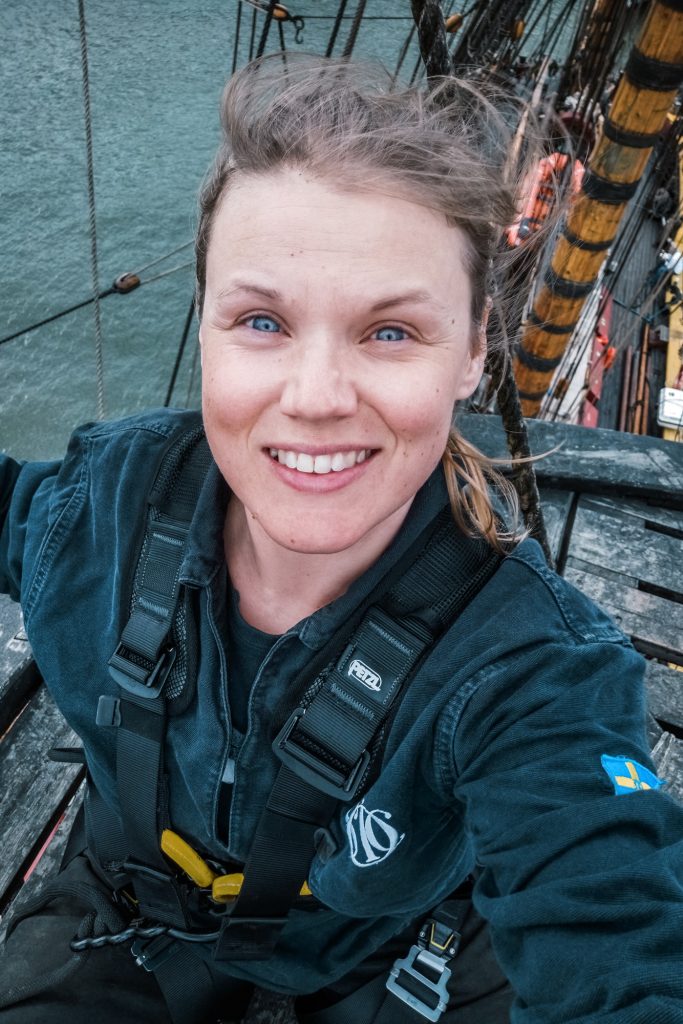
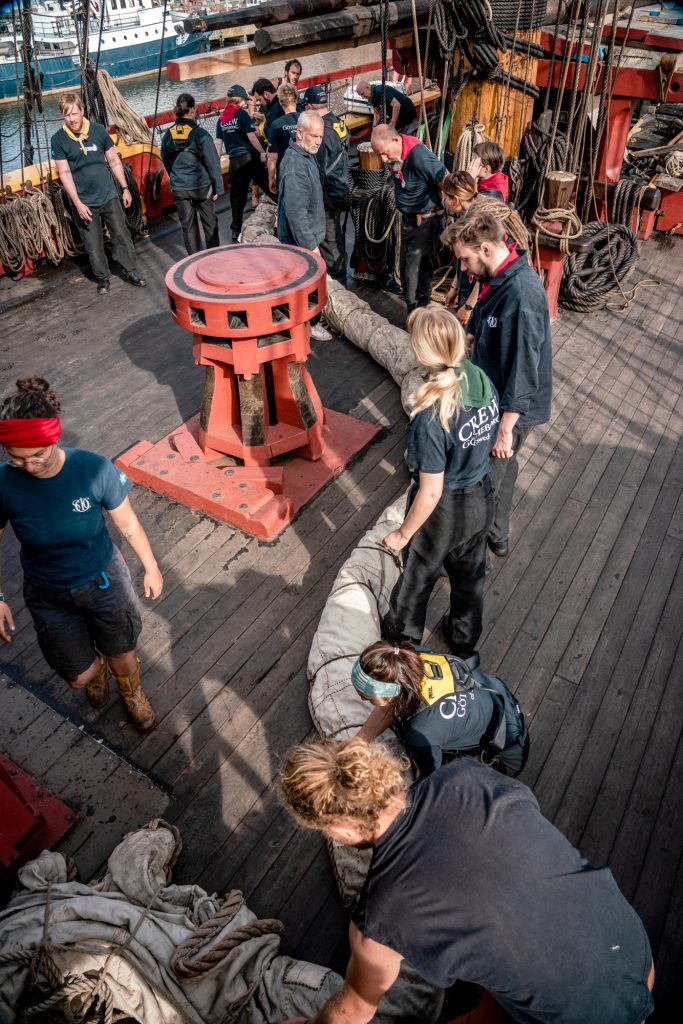
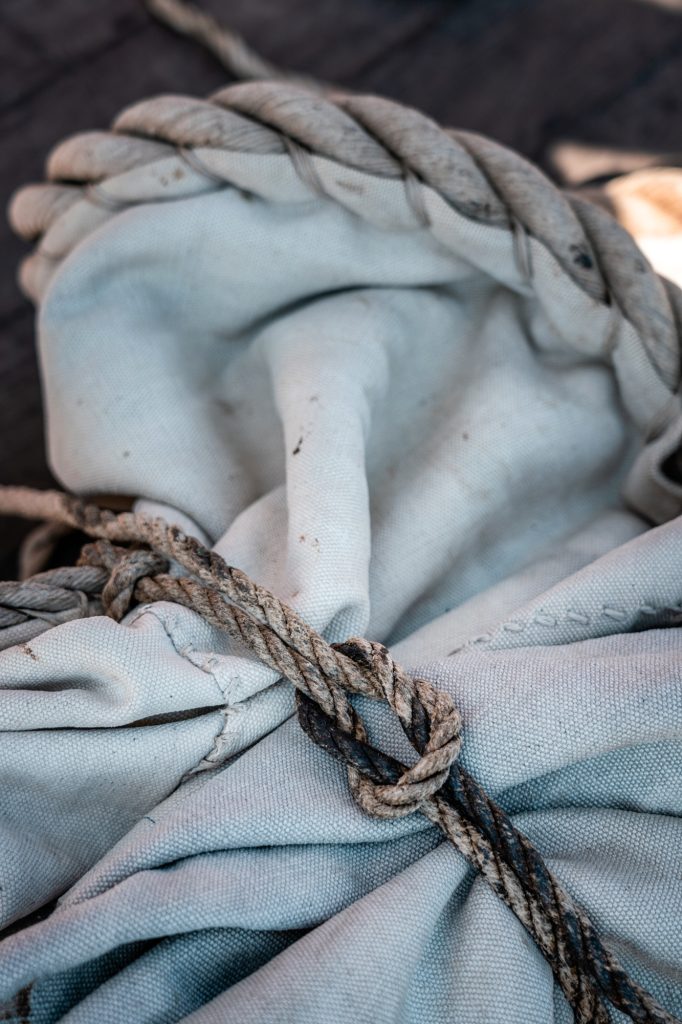
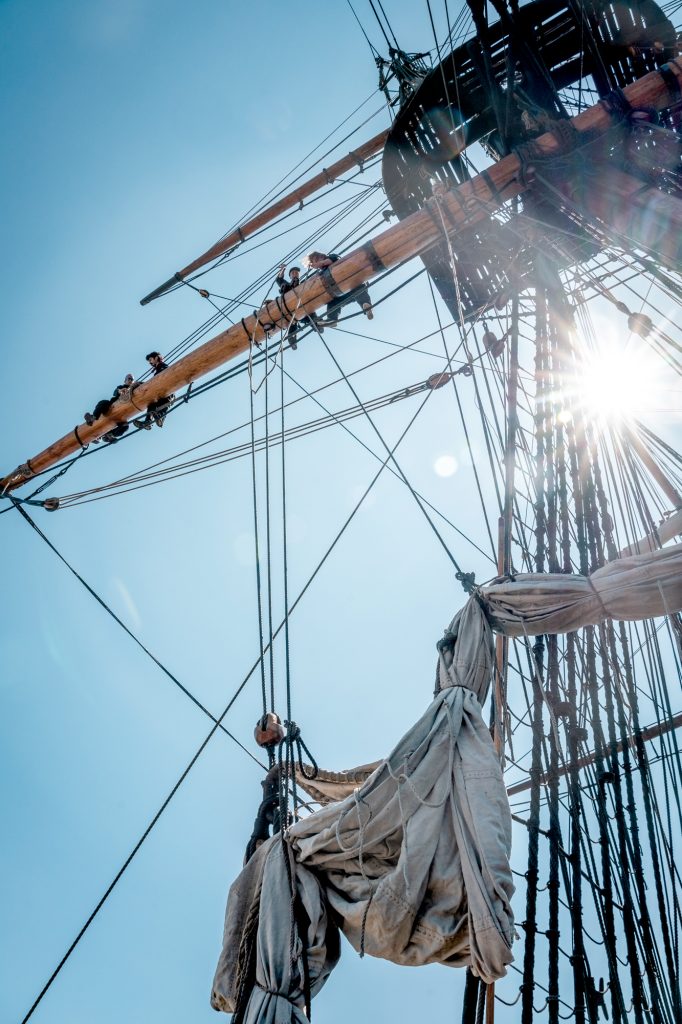
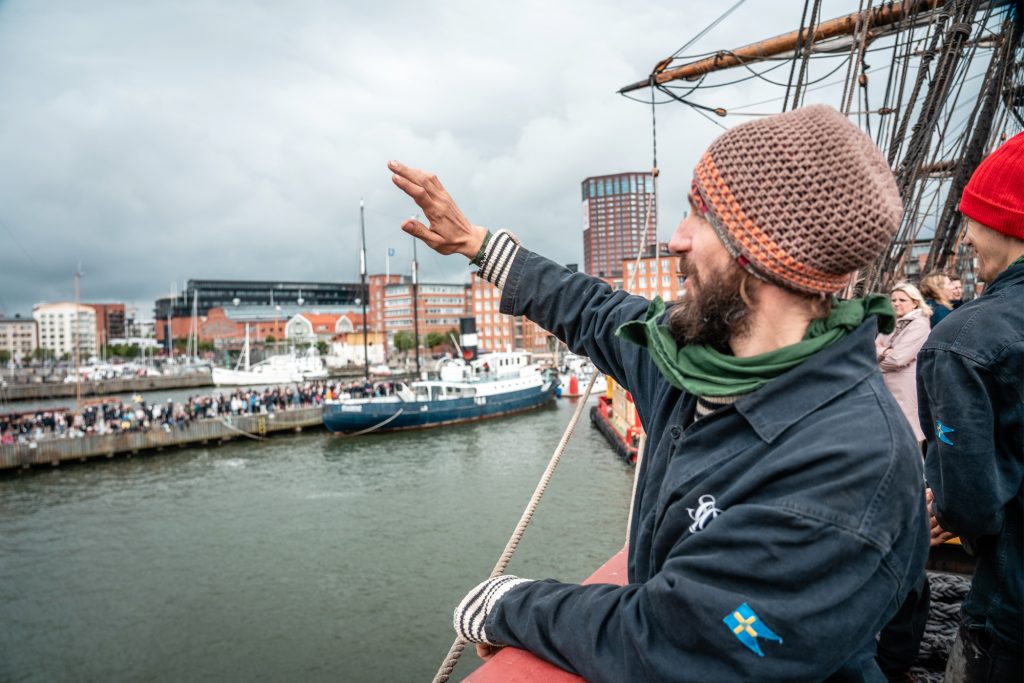
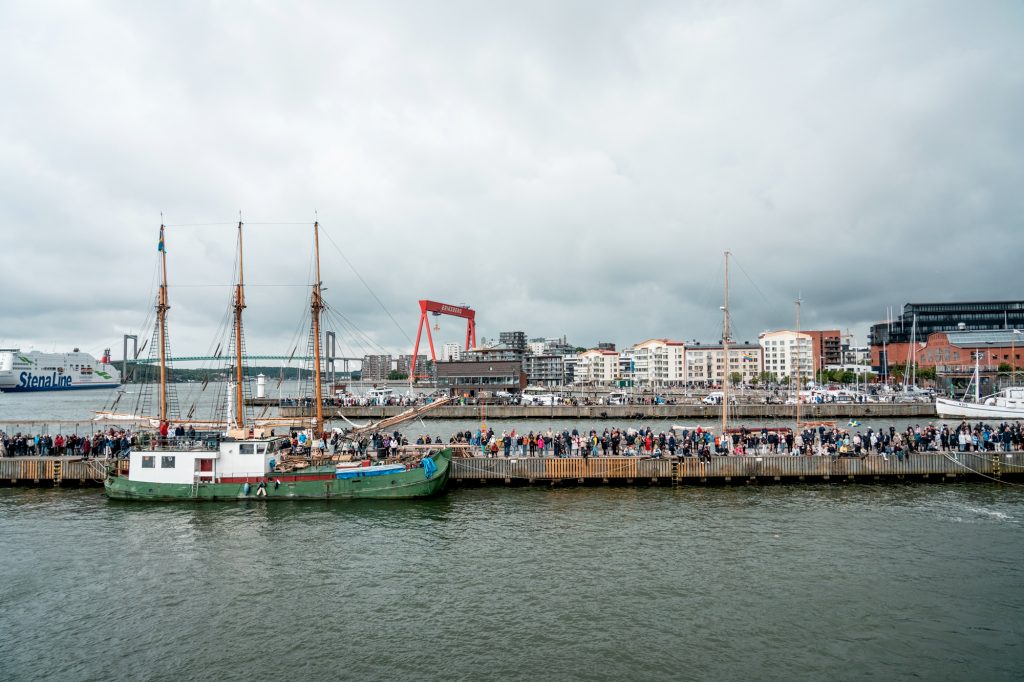
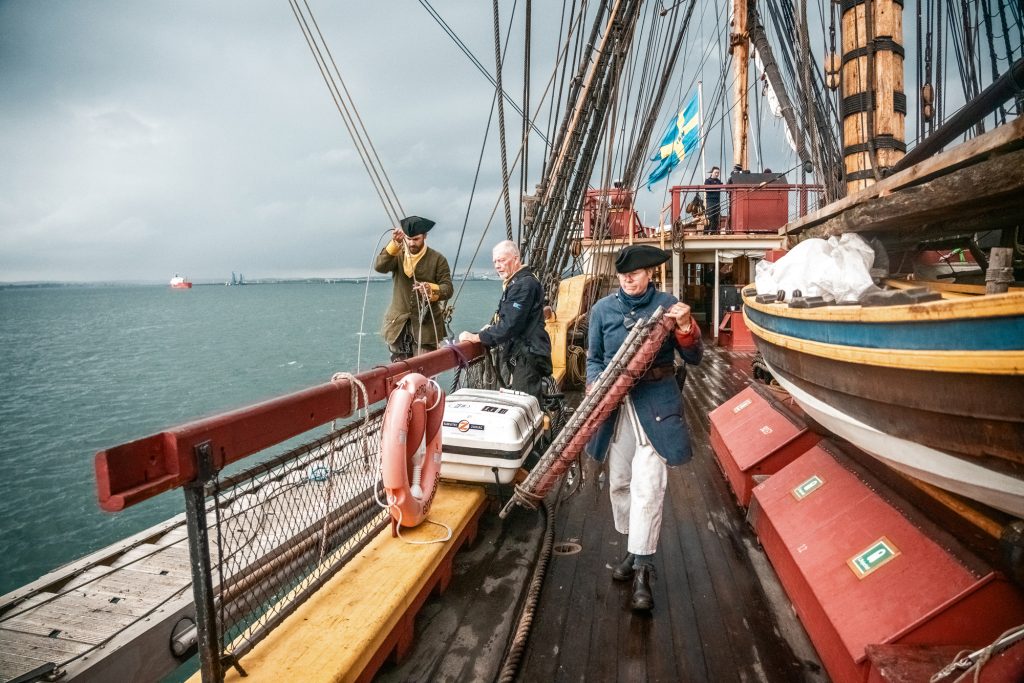
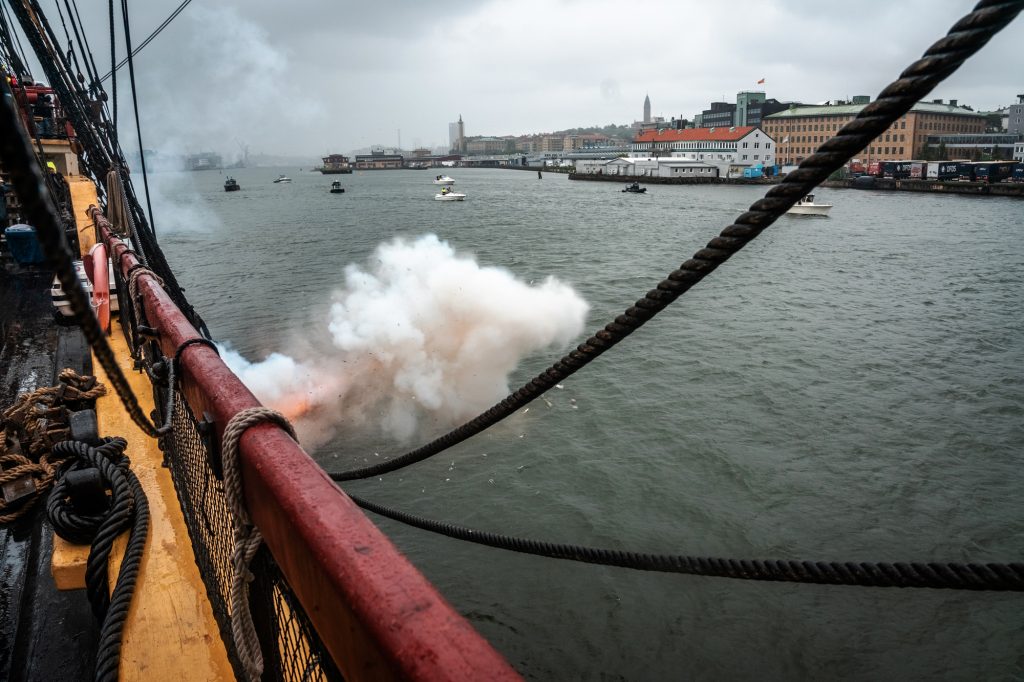
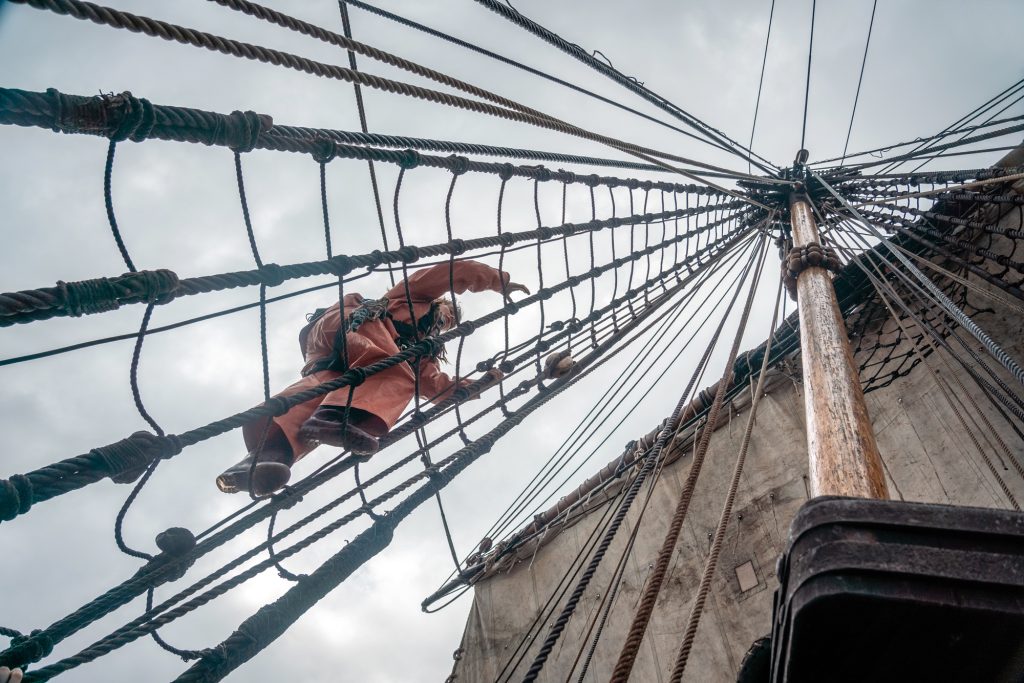
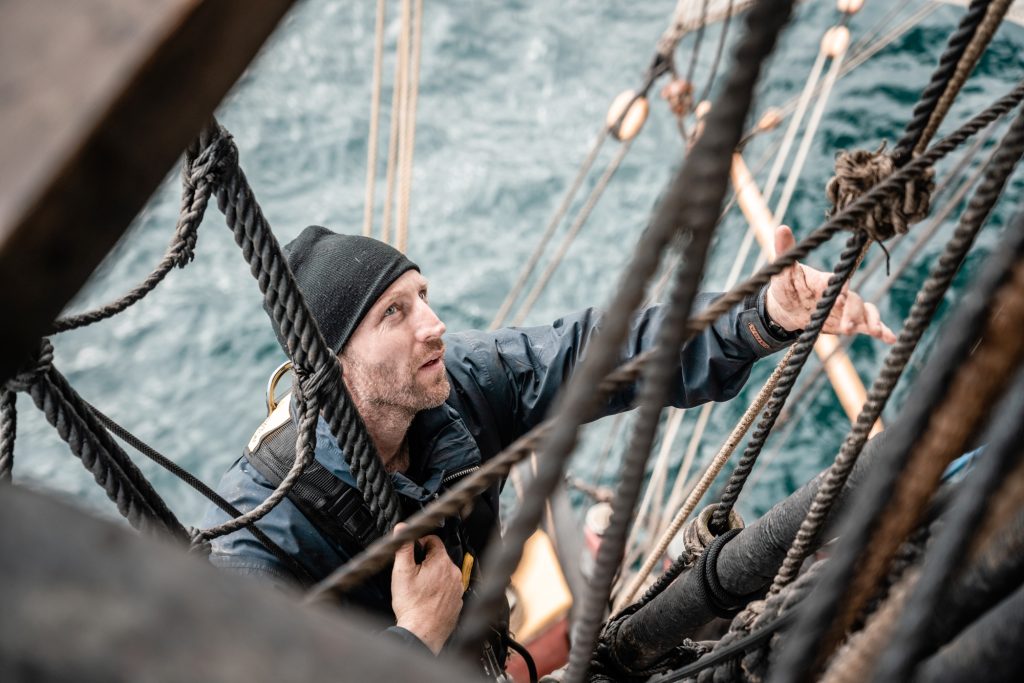
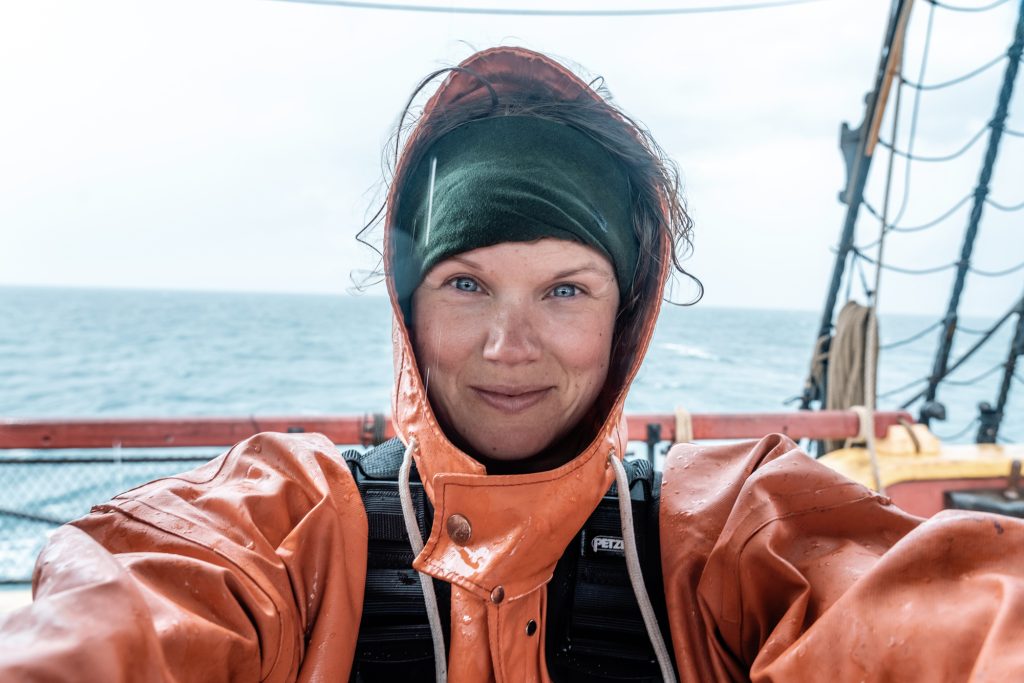
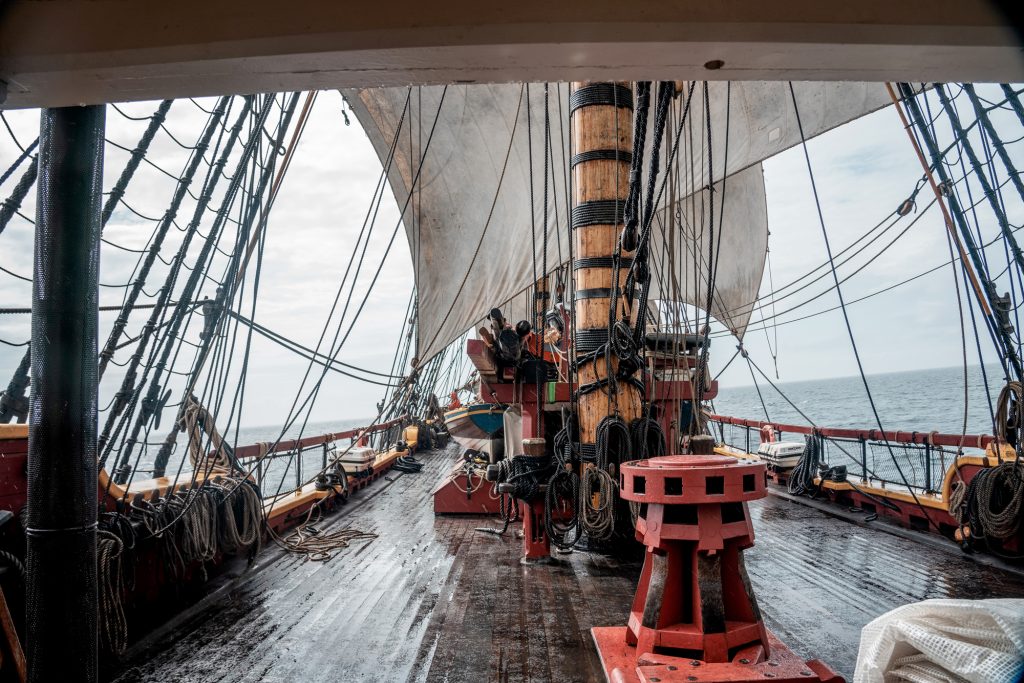
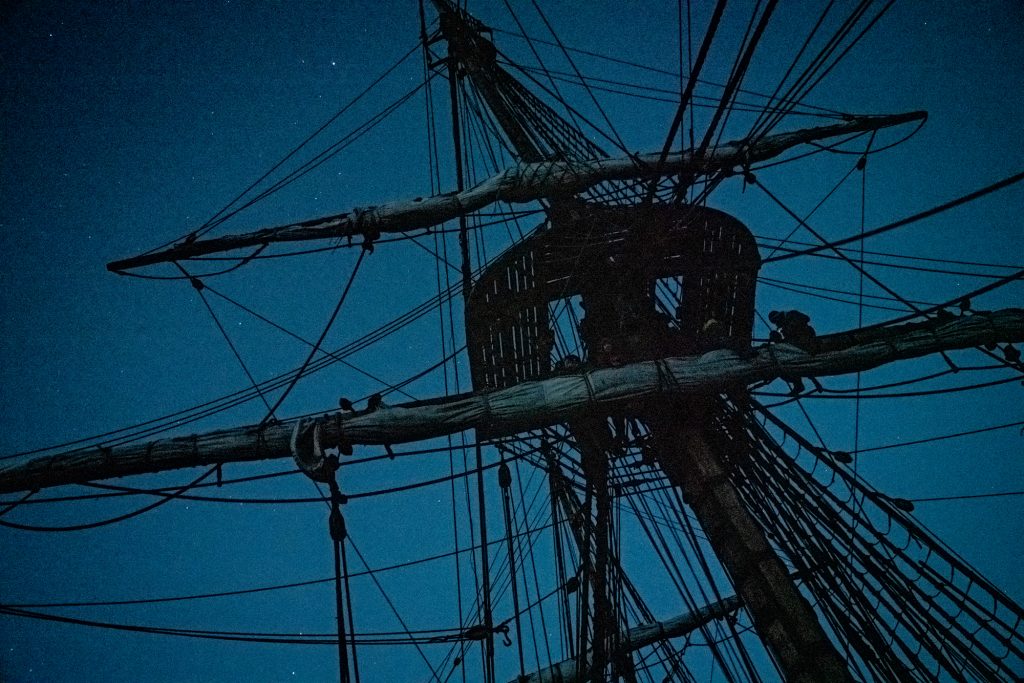
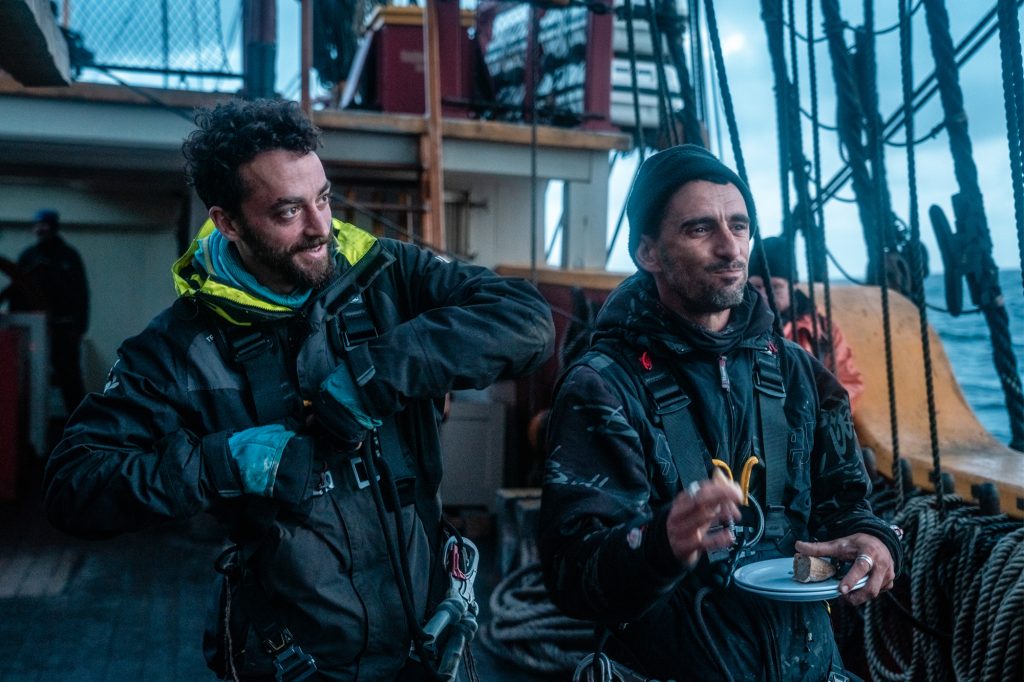
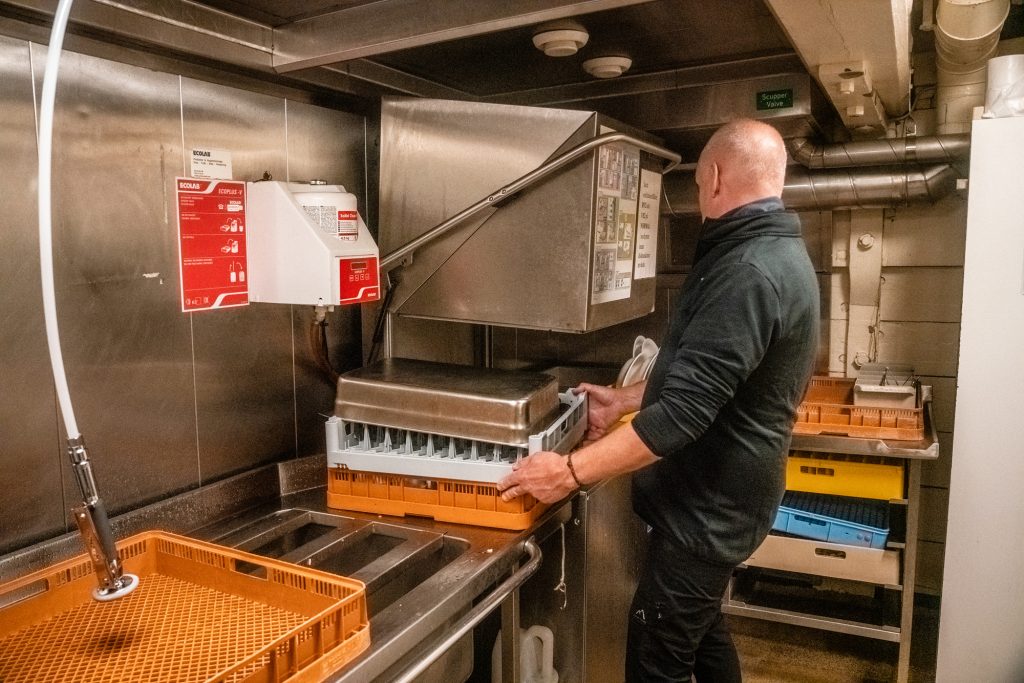
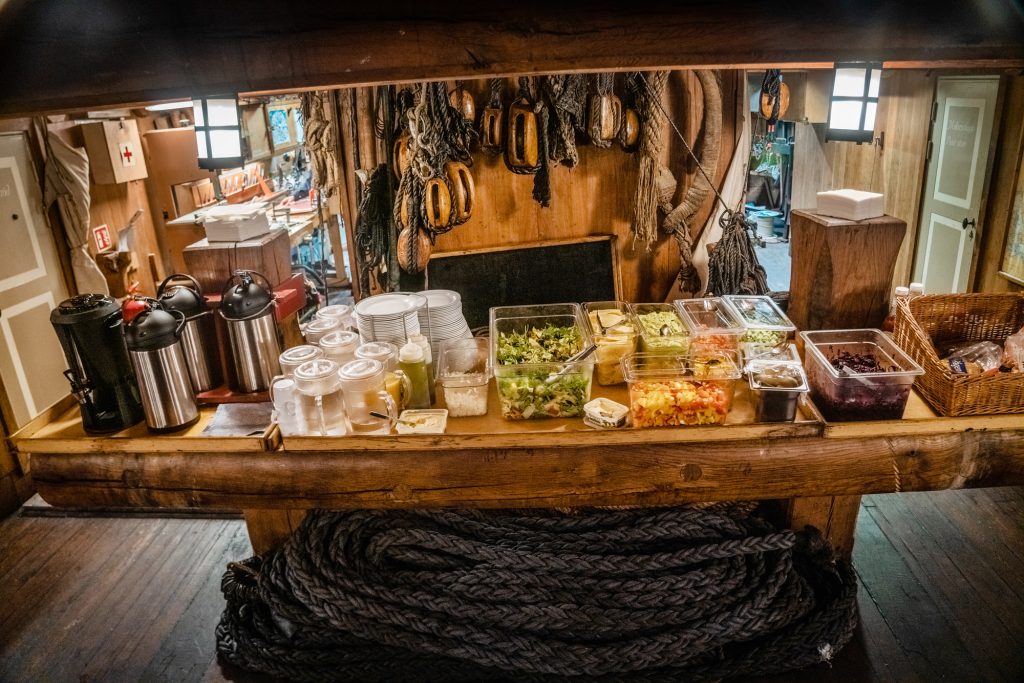
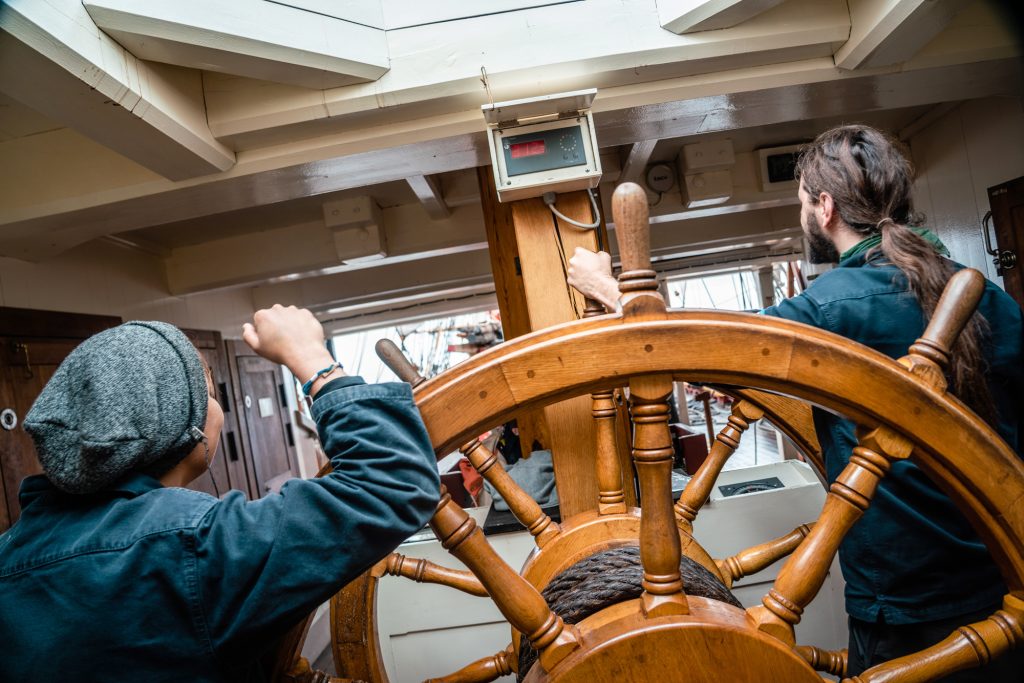
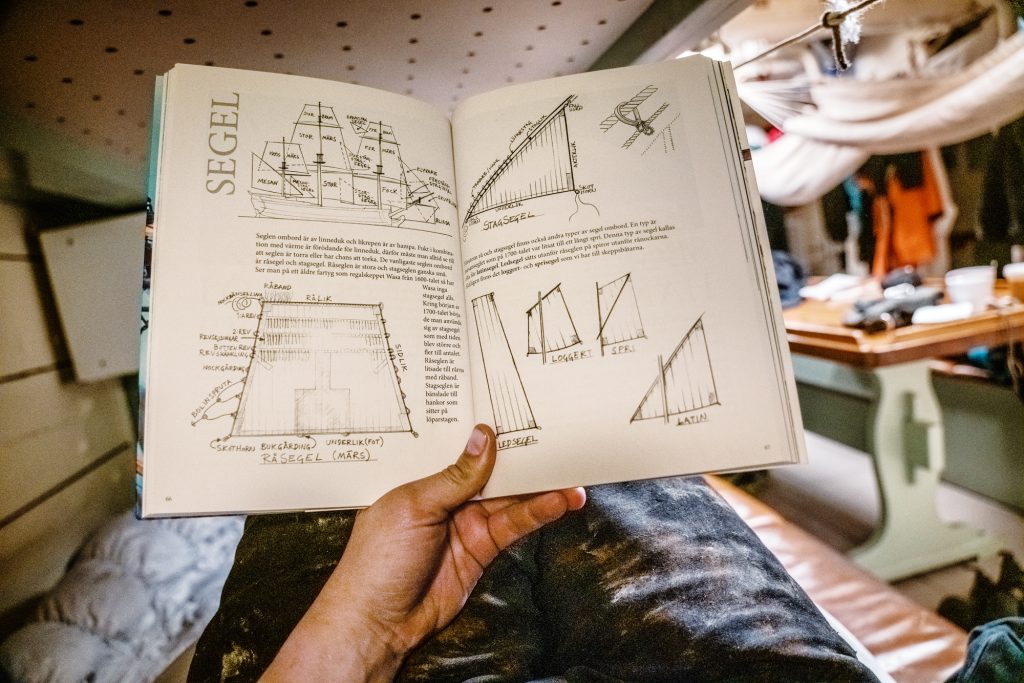
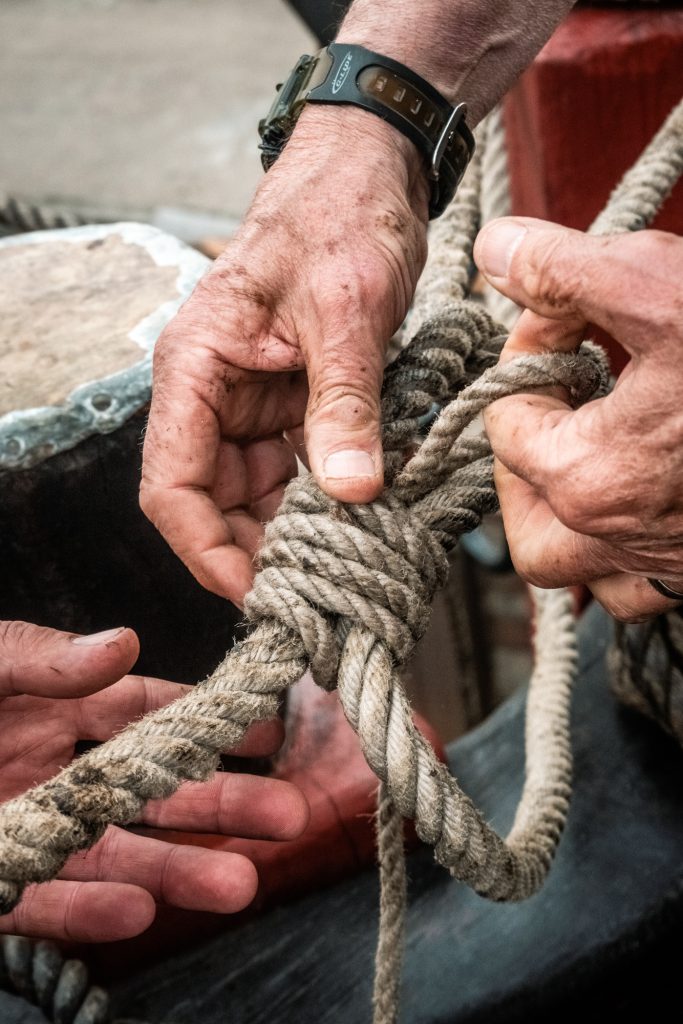
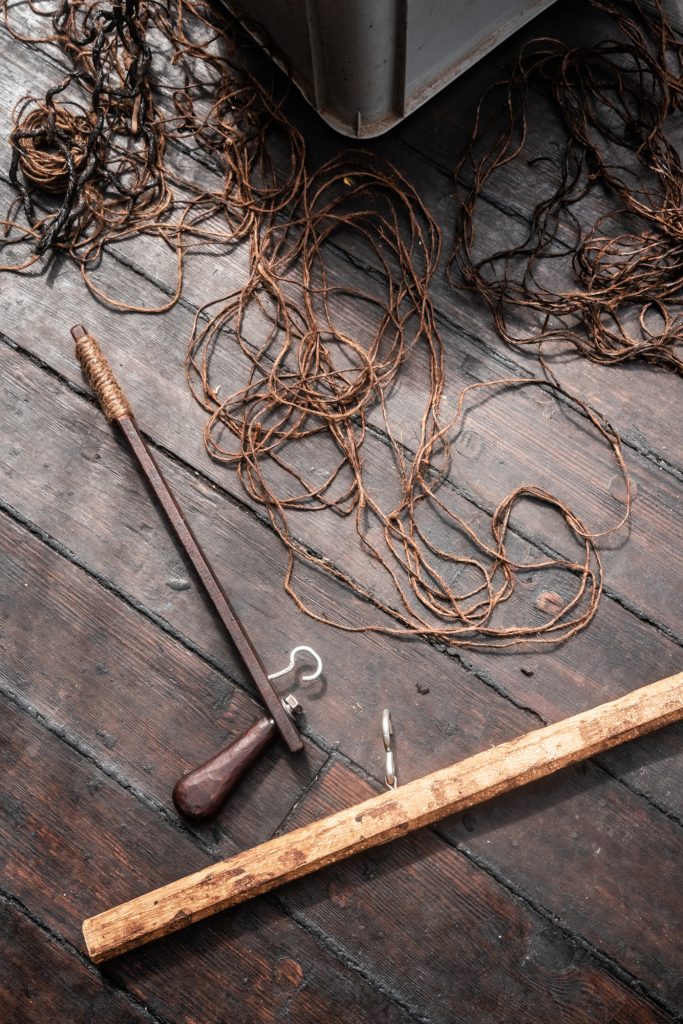
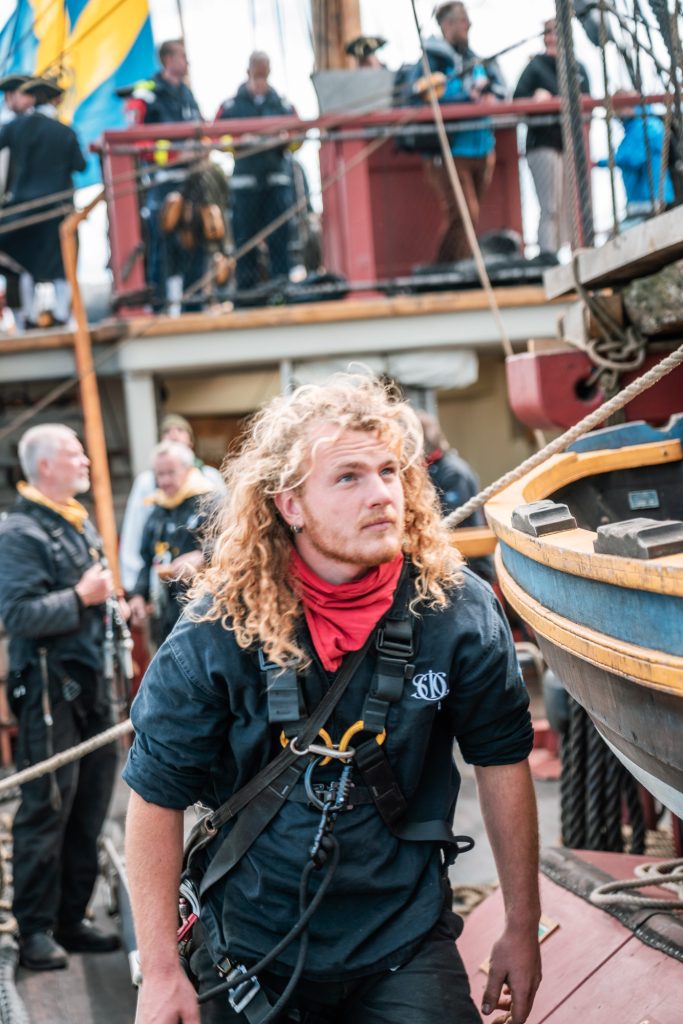
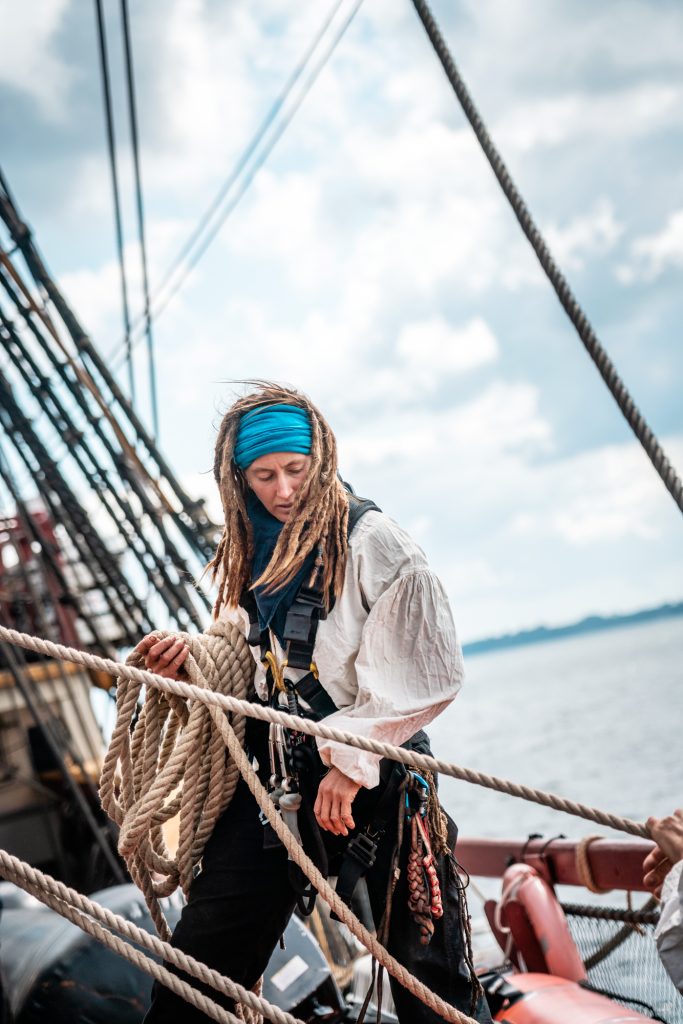
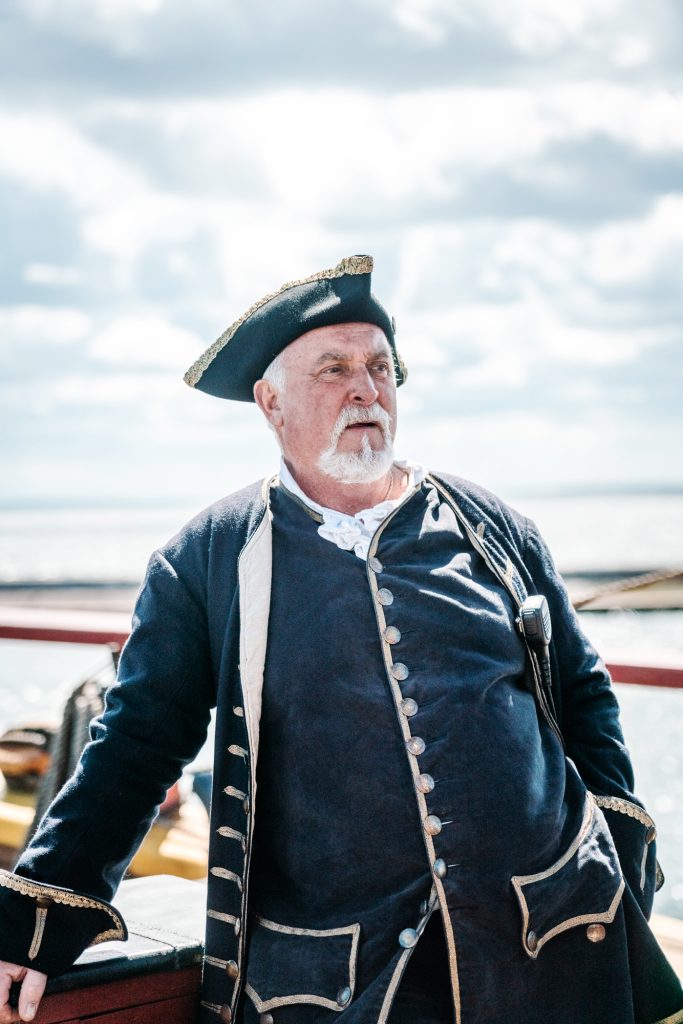
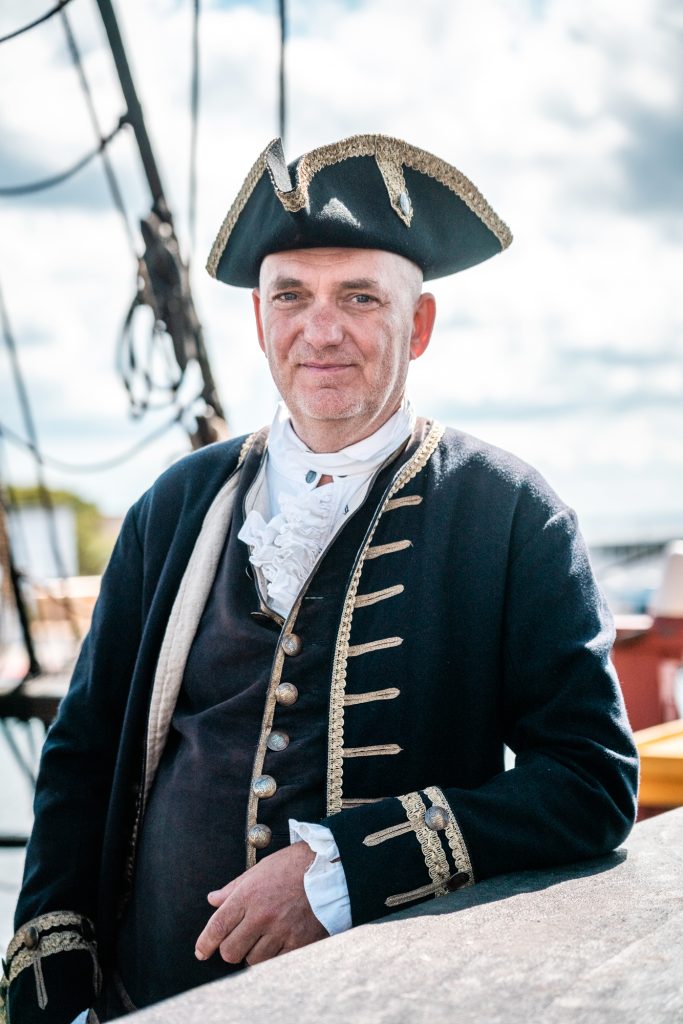
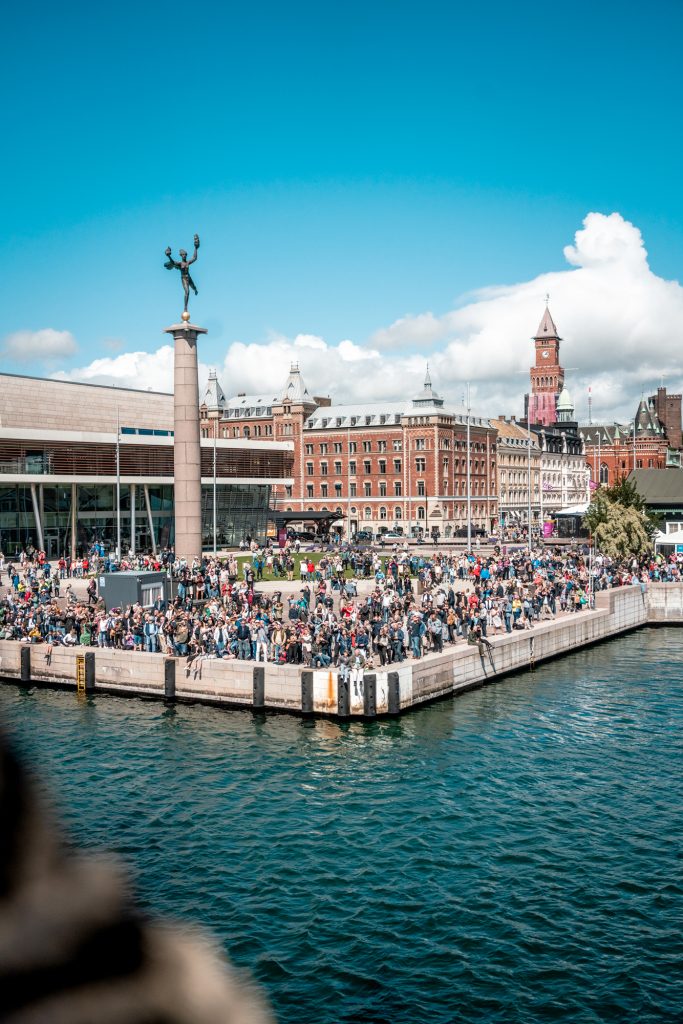
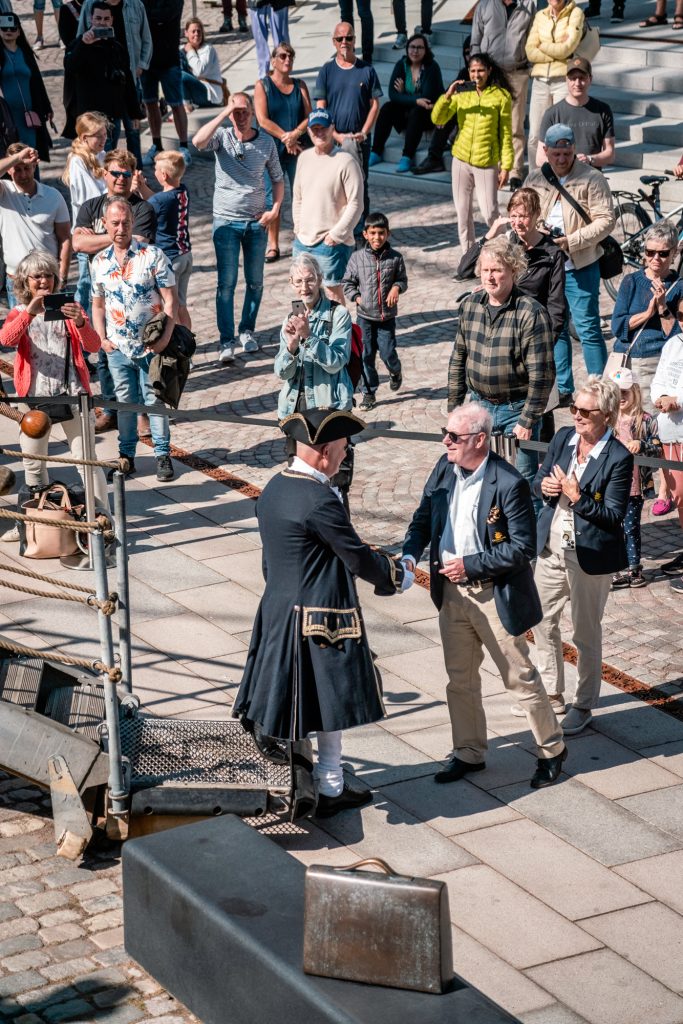
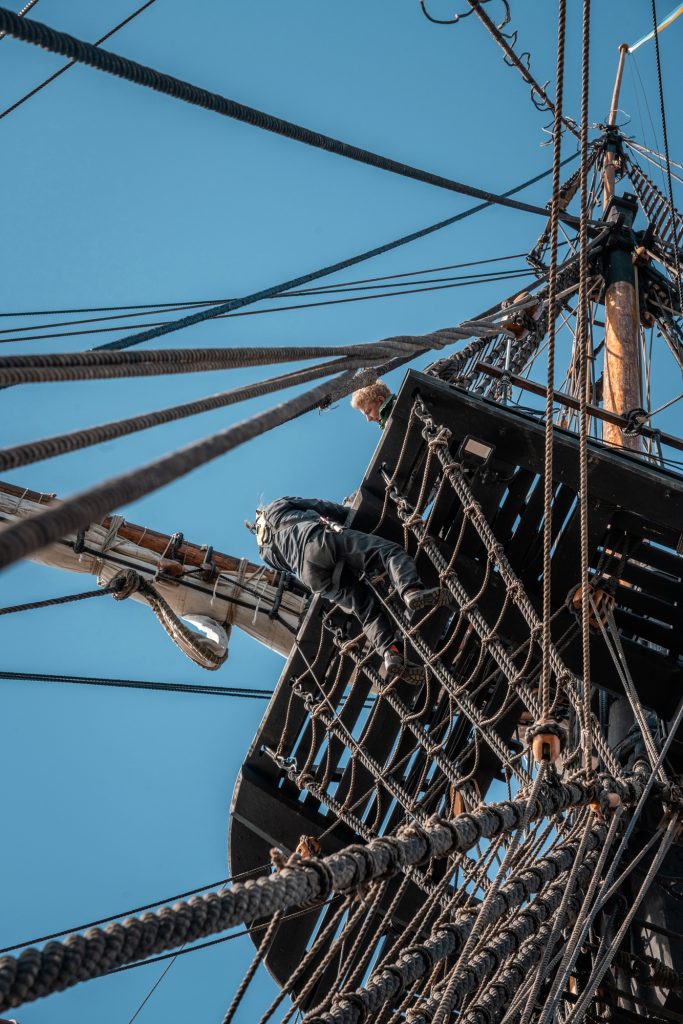
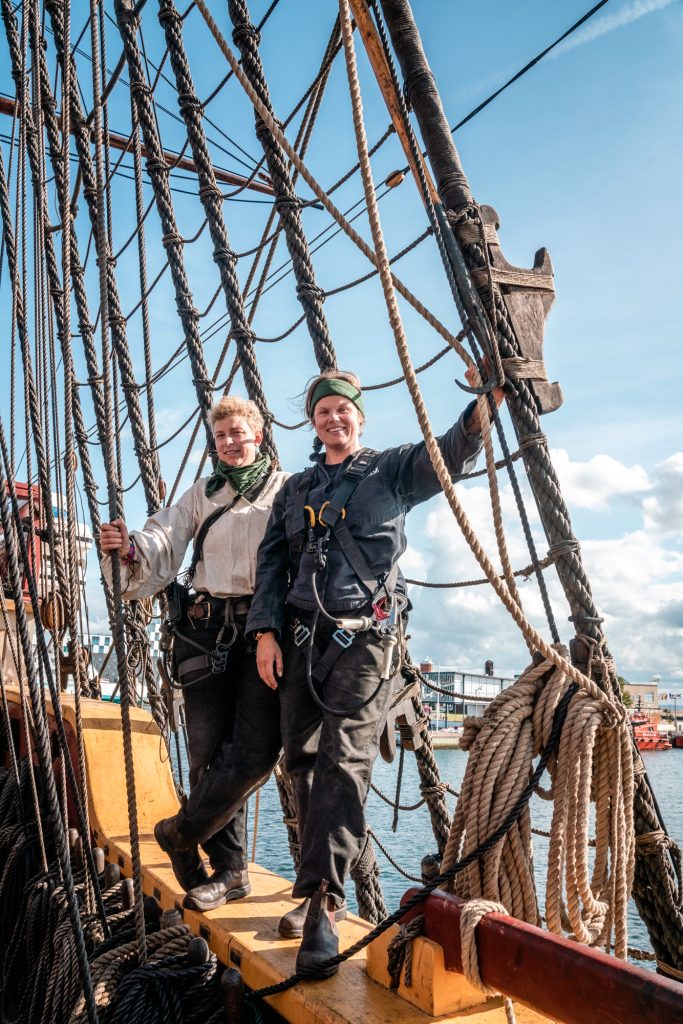
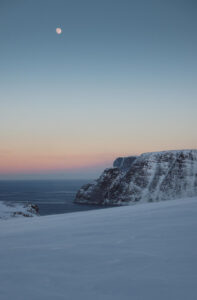
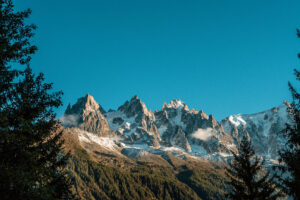
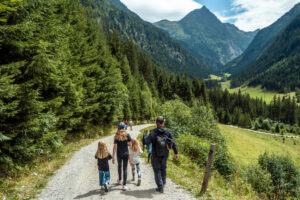
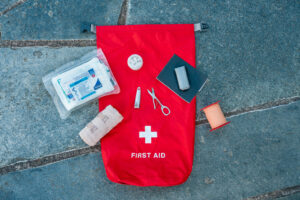
4 reaktioner på ”Ostindiefararen Götheborg: The Pioneer leg, Göteborg-Helsingborg”
Really nice writing, story a photos!
Thanks a lot!
WoW! what a literally great words you wrote here =) I really feel it! THANK you for I could read this =) I had joined the leg from London to Bremerhaven and i loved it
kiss
Thank you!